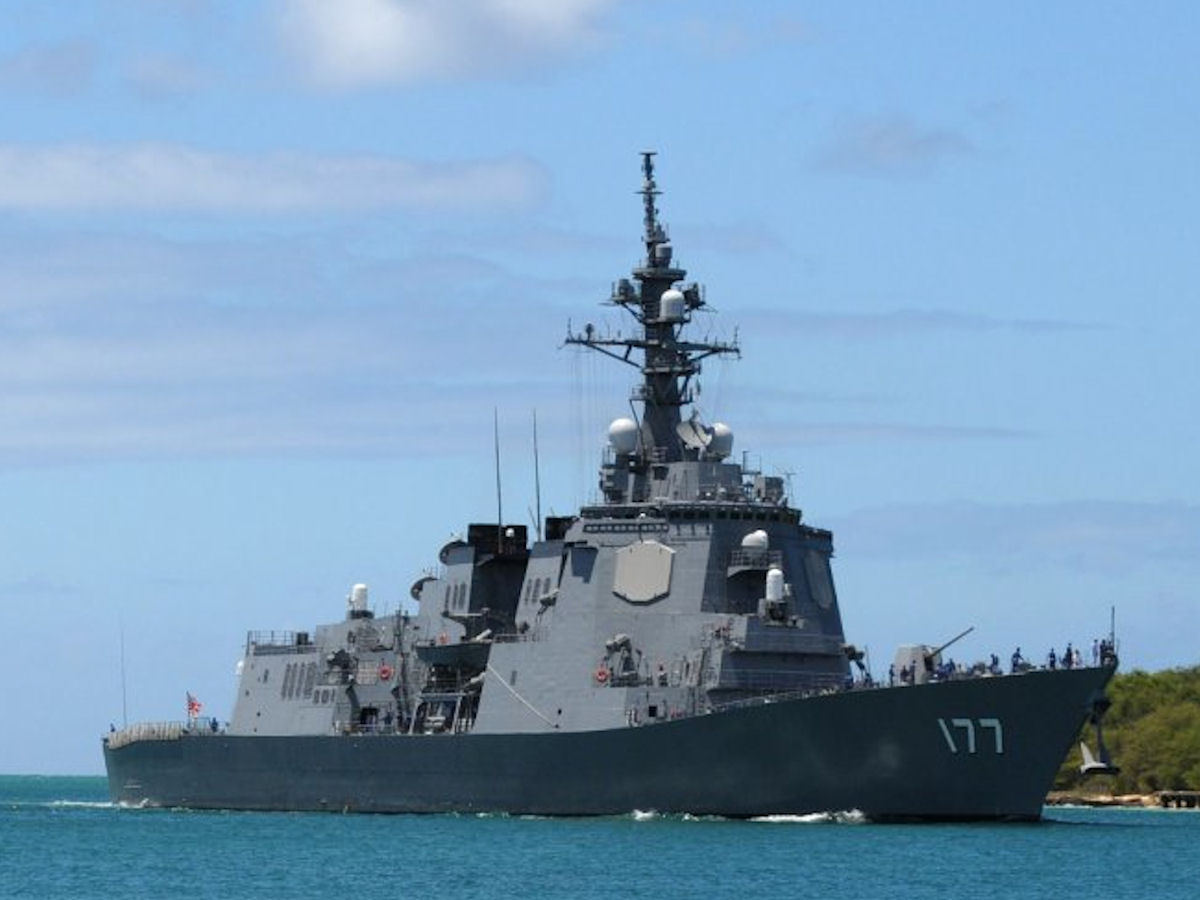 |
|
|
|
JMSDF DDG-177 Atago, AEGIS Destroyer Last updated: Helicopter, Photo Etch Railings and vents, completion - April 17, 2015 Introduction and What's in the Box - April 4, 2015
Overview - The JMSDF Atago Class:
The Atago's have a heavier doisplacement. The have maintained both of their 20mm Phalanx CIWS, their eight surface to surface missiles in quard launchers, and they have better command facilities aboard. Each of these vessels displaces over 10.,000 tons full-load, and are the largest purpose built surface combatant warships built by Japan since World War II. The Hyuga class and now Izumo class DDH carriers are larger, but they are more oriented towards helicopter and aircraft carrying where the Atago class are true multi-mission surface combatants. Each of these vessels is heavily armed and acts as a escort to Japan's high value capitol vessels. Their armament includes:
Two vessels were built and have been commisisoned and are fulfilling this role:
DDG-177 Atago, Laid down on April 5, 2004, launched on August 24, 2005, and commissioned on March 1, 2007. In 2012, the Japanese government aannounced that they will build two more Atago class destroyers.
All four are powerd by by four Ishikawajima-Harima LM2500 gas turbines which give them a top speed of in excess of 31 knots. The superstructure of each is dominated by the AN/SPY-1D(V) phased array radar, which are fixed, radars facing in each of four directions providing 360 degree coverage without a rotating radar. The design of the superstructure also incorporates stealth features, designed to reduce radar cross section of the ships. As a consequence, these ships, like their Kongo sisters, is somewhat more top-heavy than other destroyers and requires a deeper draft. As such, operations in a littoral (coastal) environment are limited. They have a high top speed and are suprisingly manueverable, and because of thier large displacement actually come closer to the size of traditional cruisers than destroyers. The Atago destroyers are being updated for modernization and to assume additional roles as time progresses. One of the most important of these has been to serve in a theater ballistic missile defense role. Due the proliferation of short to medium range ballistic missiles, adopting this role and using the US developed systems and weapons (as the US does on its Arleigh Burke class destroyers) was a natural evolution to help protect the Japanese islands from this threat. In December 2007, Japan conducted a successful test of the SM-3 block IA against a ballistic missile aboard JDS Kongo (DDG-173). This was the first time a Japanese ship was selected to launch the interceptor missile during a test of the Aegis Ballistic Missile Defense System. In previous tests they provided tracking and communications. Afterward, Japan has also undertaken another two successful Ballistic Missile Defense test aboard another of their AEGIS DDGs in October 2009 and in October 2010. These vessels will remain the center pieces for JMSDF flotilla operations for the next several decades. With the addition of two more Atago classes, there will be one Atago for each of Japans four destroyer flotillas. In combination with the Kongo class DDGs, the Hyuga class DDHs, and the new Izumo Class DDHs, with an Atago class DDG, each of these flotillas has the potential to exert a very powerful presence anywhere in the western Pacific.
What's in the Box: Inside the box, you find the hull in two pieces, one to be used for the waterline, with a plate to attach to its bottom, and the other to add to the above waterline portion to show the full hull. This lower section is molded in a hull red, though not exactly the color I will use for the blow waterline portion. There is a full length, highly detailed main deck to match it. All are molded very well with little or no flash or extra plastic left over form the molding process. There are 10 sprues of gray plasic parts, and one sprue of clear plastic parts (for the helicopter). Altogether there are well in excess of 350 parts to the model. There are also three sprues of photo etch parts included with this model. They provide for all of the railing, safety netting, and many of the senosros and grating cover plates for the ship. This adds well over 100 more pieces to the model. The plastic parts are extremely detailed and the plastic sensors, vents, tie downs, and other small parts in very good detail as well. Another great option provided for in this model that I really like is that the forward 64 cell VLS is provided in complete detail. You can cut out the deck covering and build the entire VLS structure, with the eight sections, each carrying eight cells, included. This can then be fitted to the ship such that it slides in and out to show this detail. A nice feature. A very good set of waterslide decals with over 50 decals is included which covers all of the flight deck markings, all of the helo markings, and the pennant numbers and various hull and superstructure markings. There is a very nice full-color sheet of the Takinami in multiple views for painting, including several of the most common paint suppliers part numbers for the paint. The instruction sheet is, as is the case with all newer Trumpeter models, very intuitive and well laid out. it is 16 pages lon and covers all of the build, including all options for the modeler (ie. like whether to make a waterline build or not).


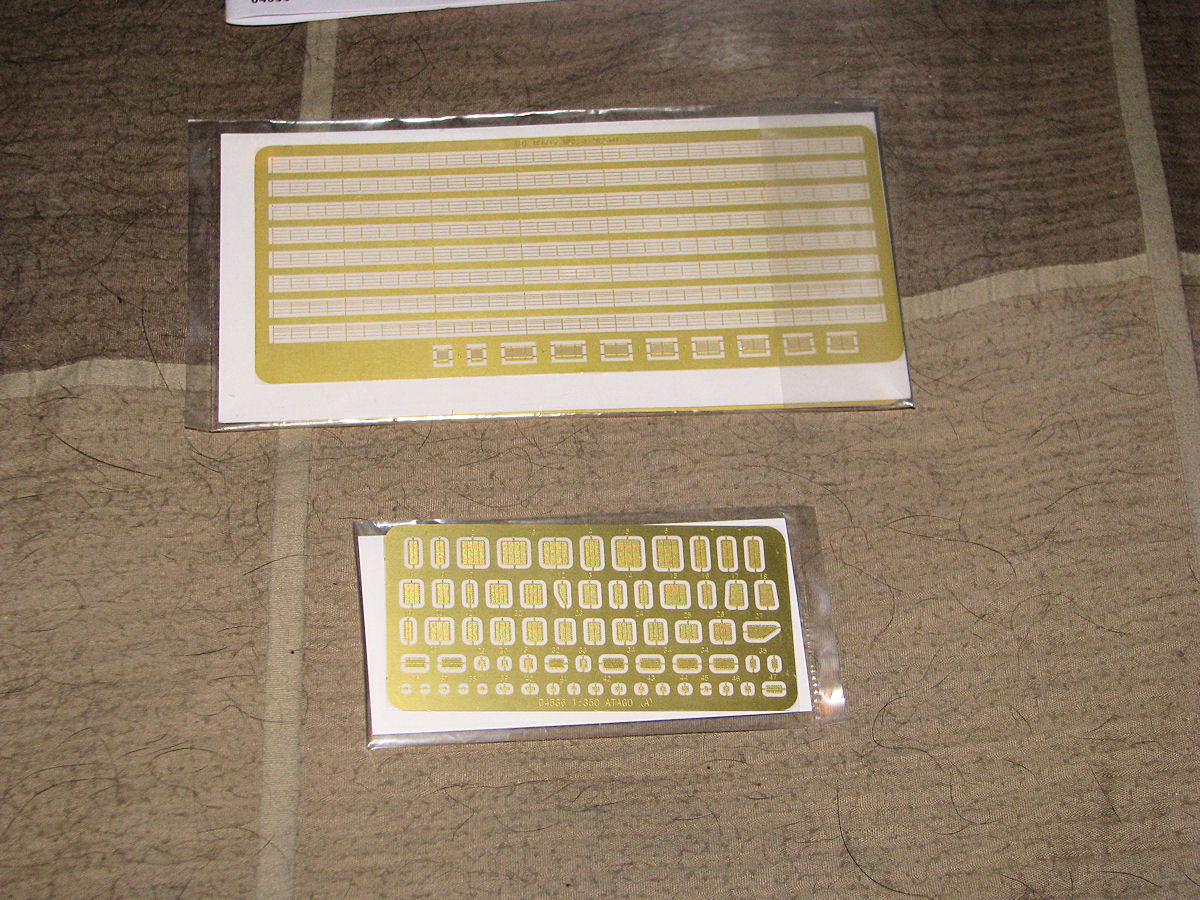 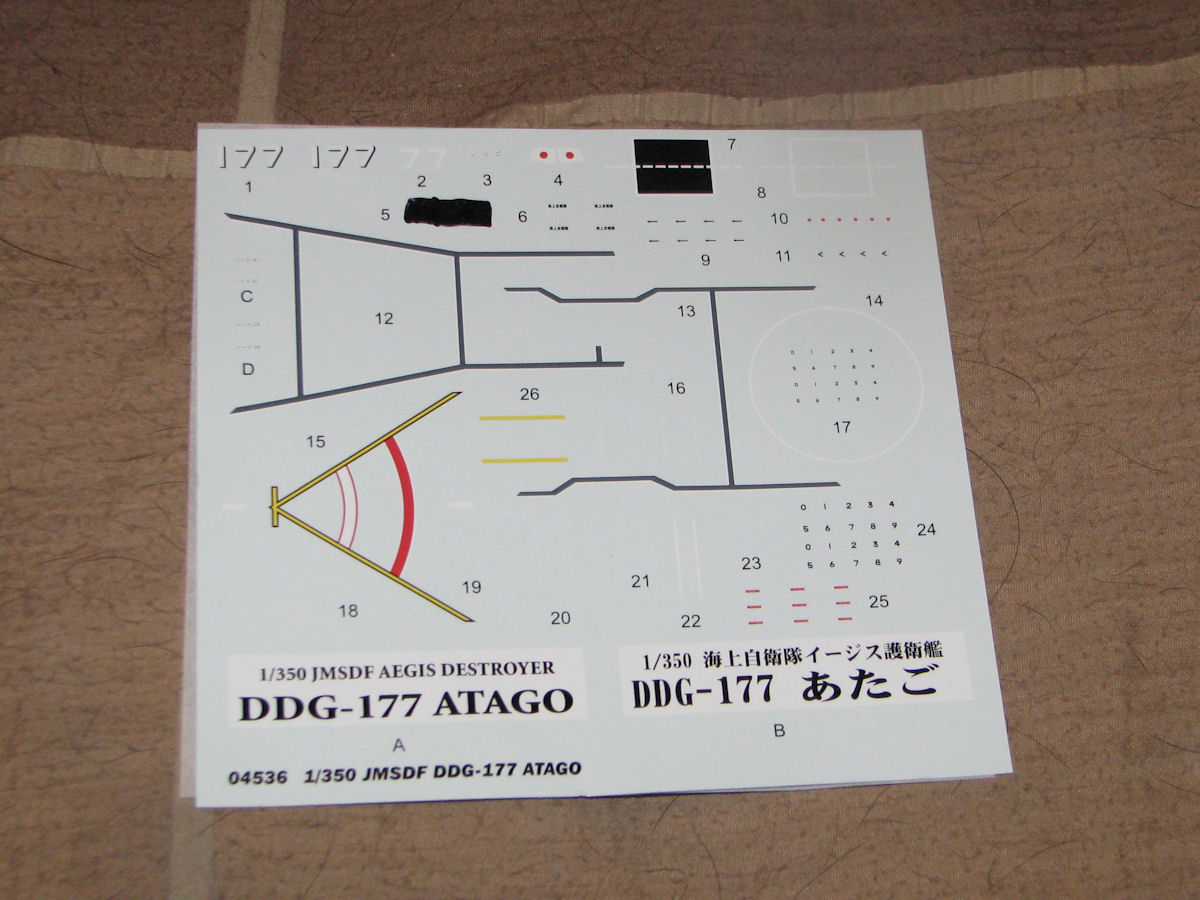

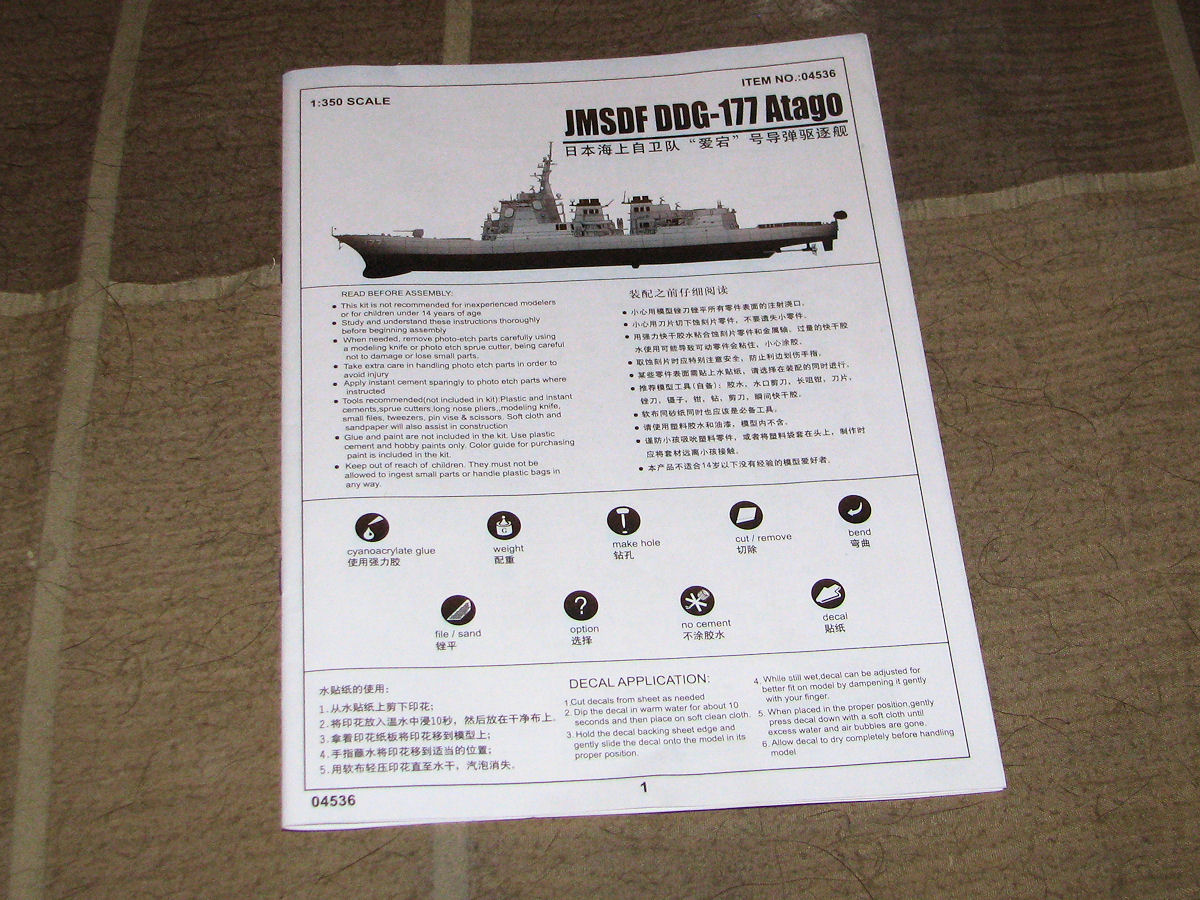 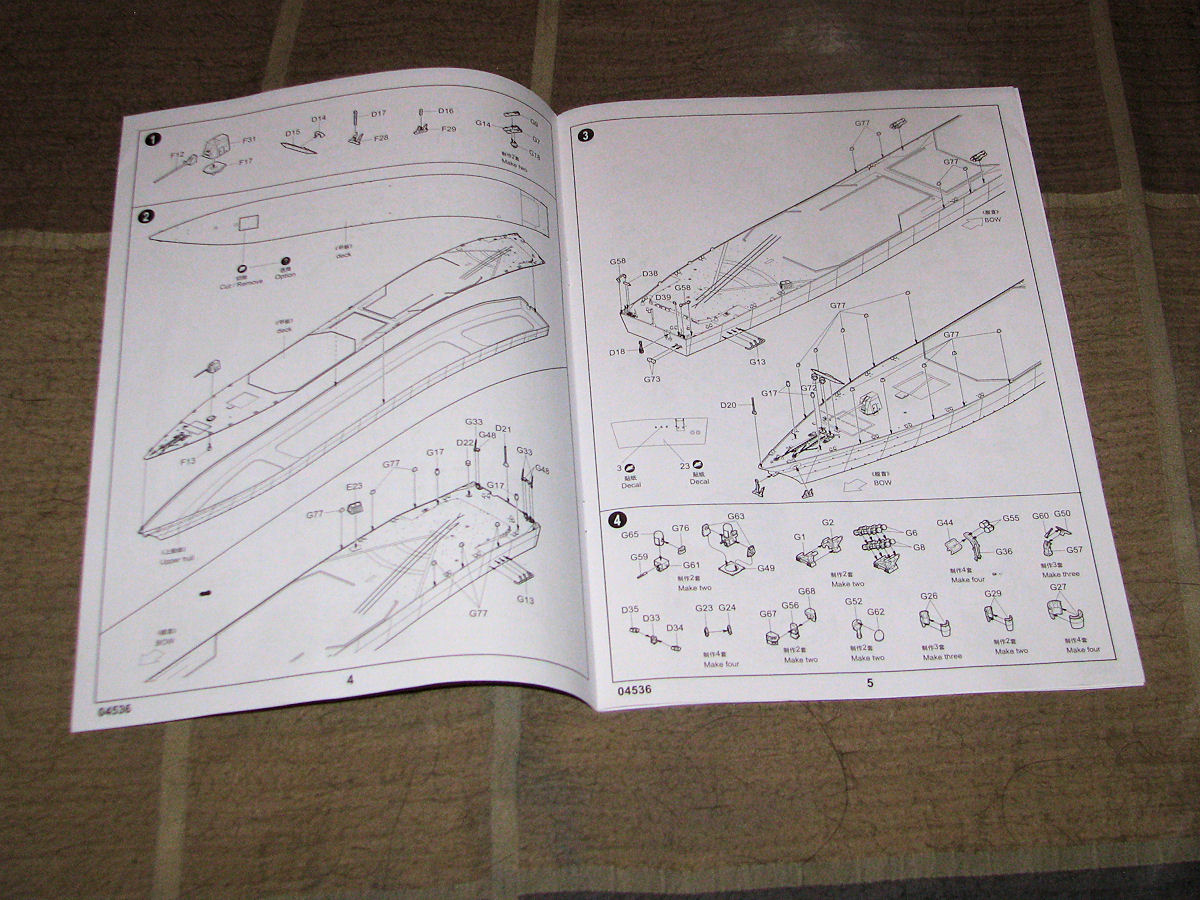
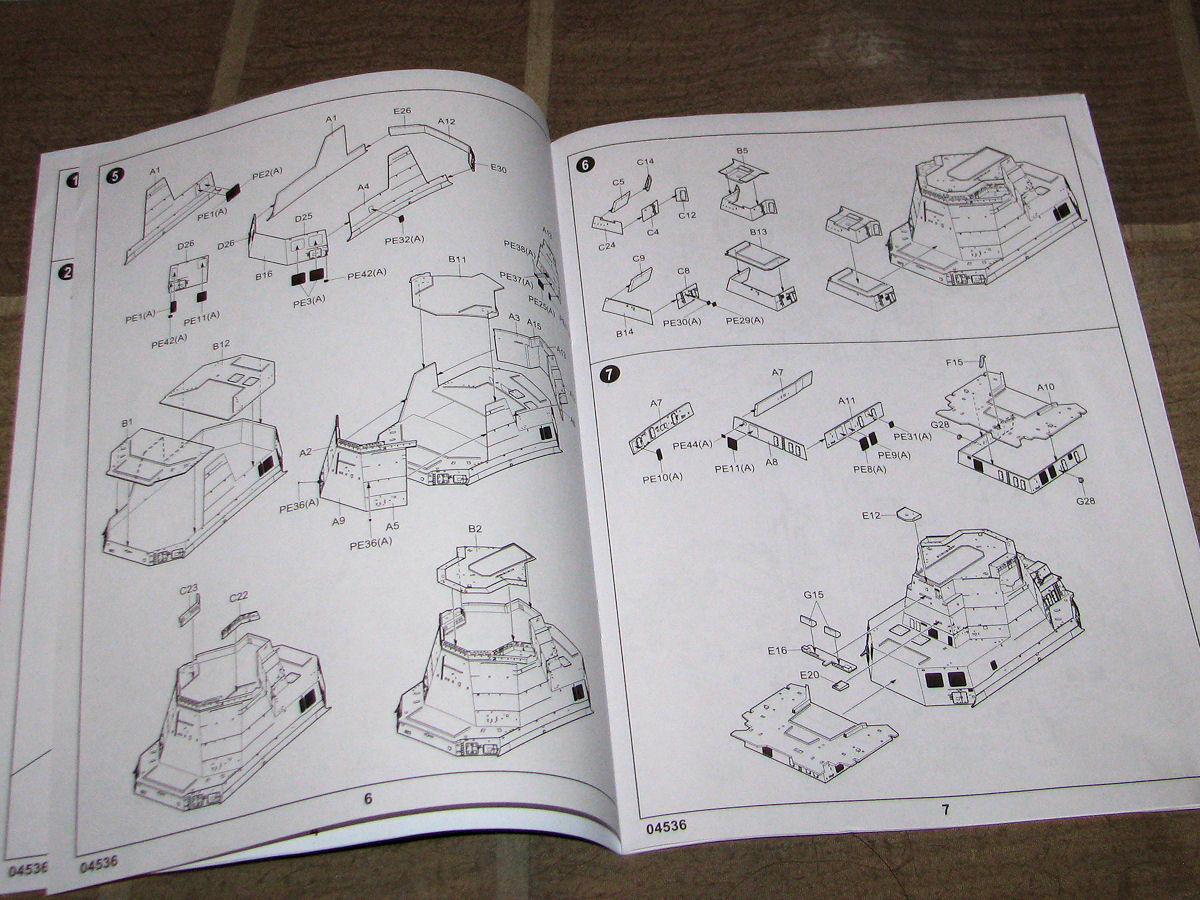
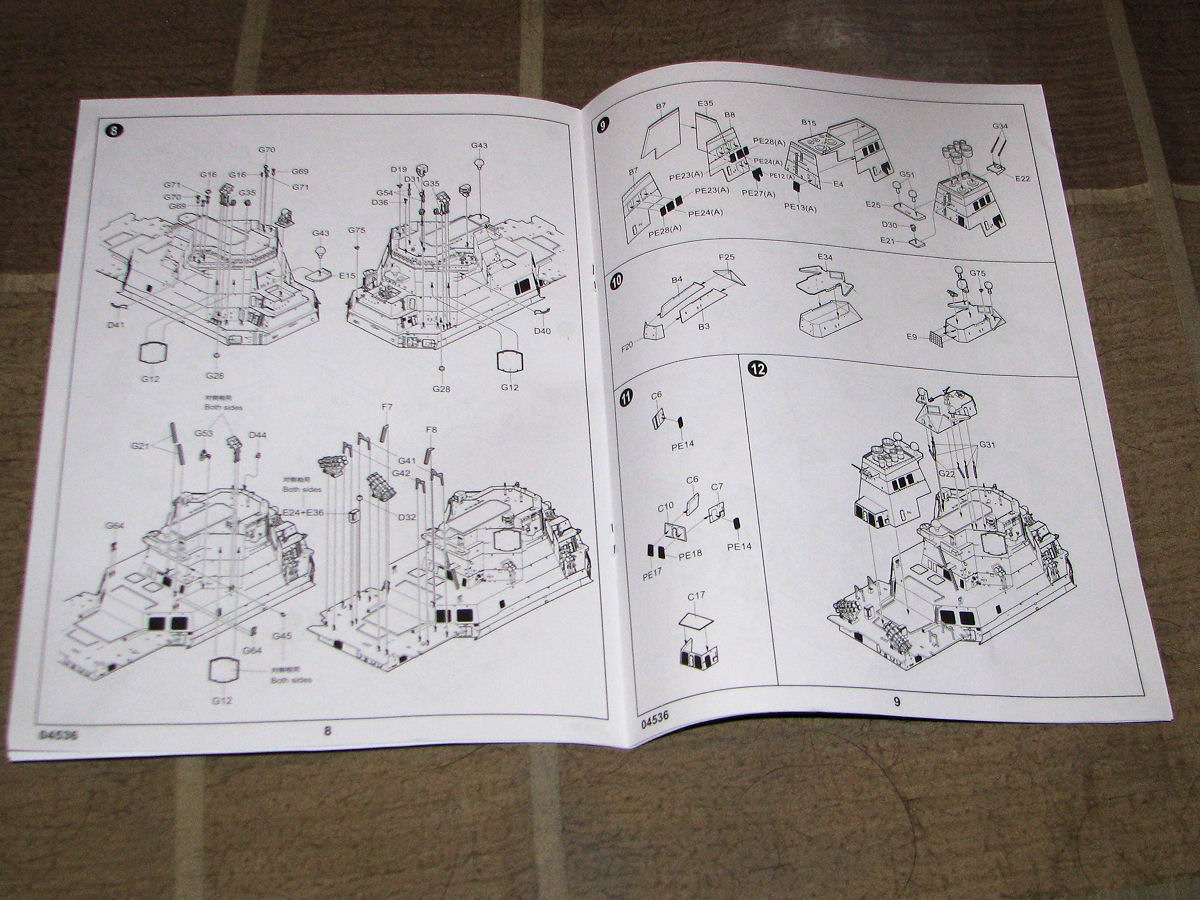 

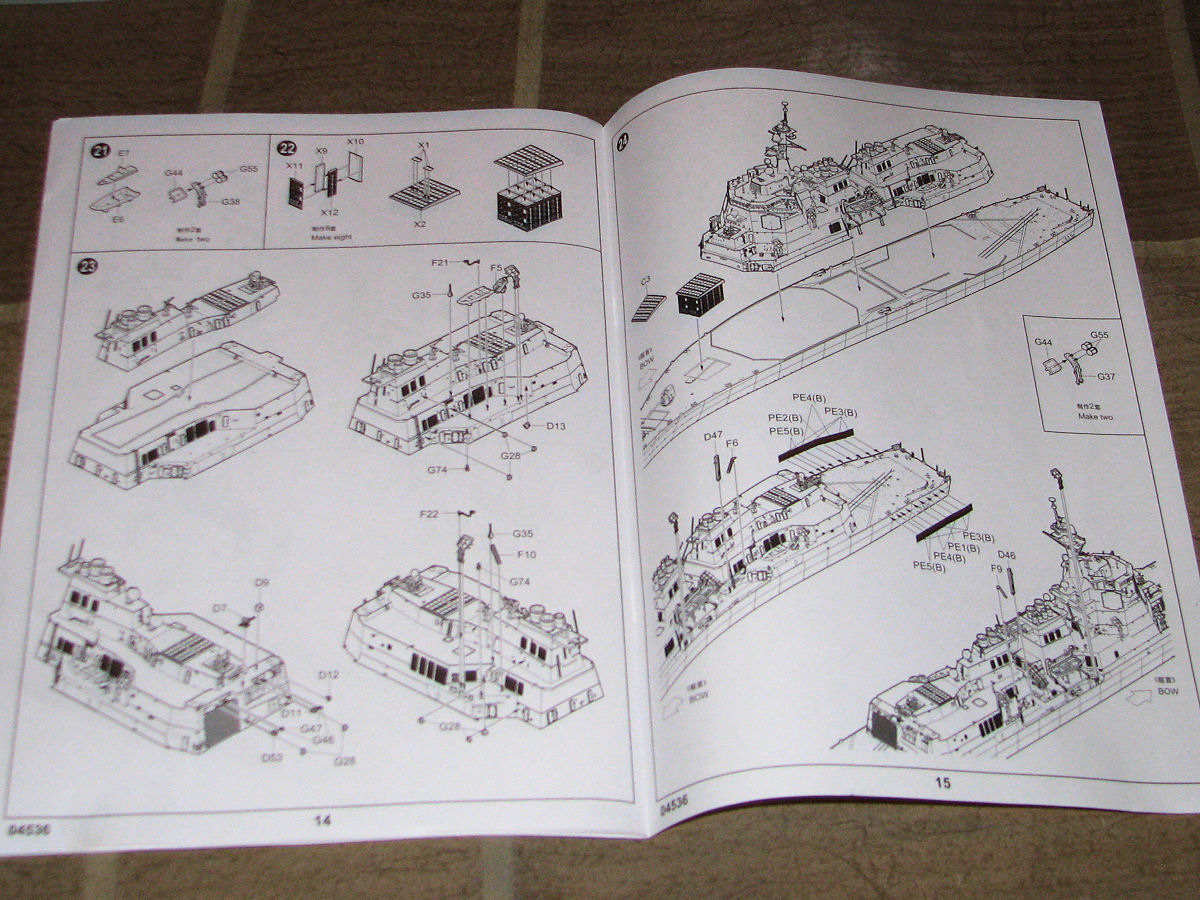 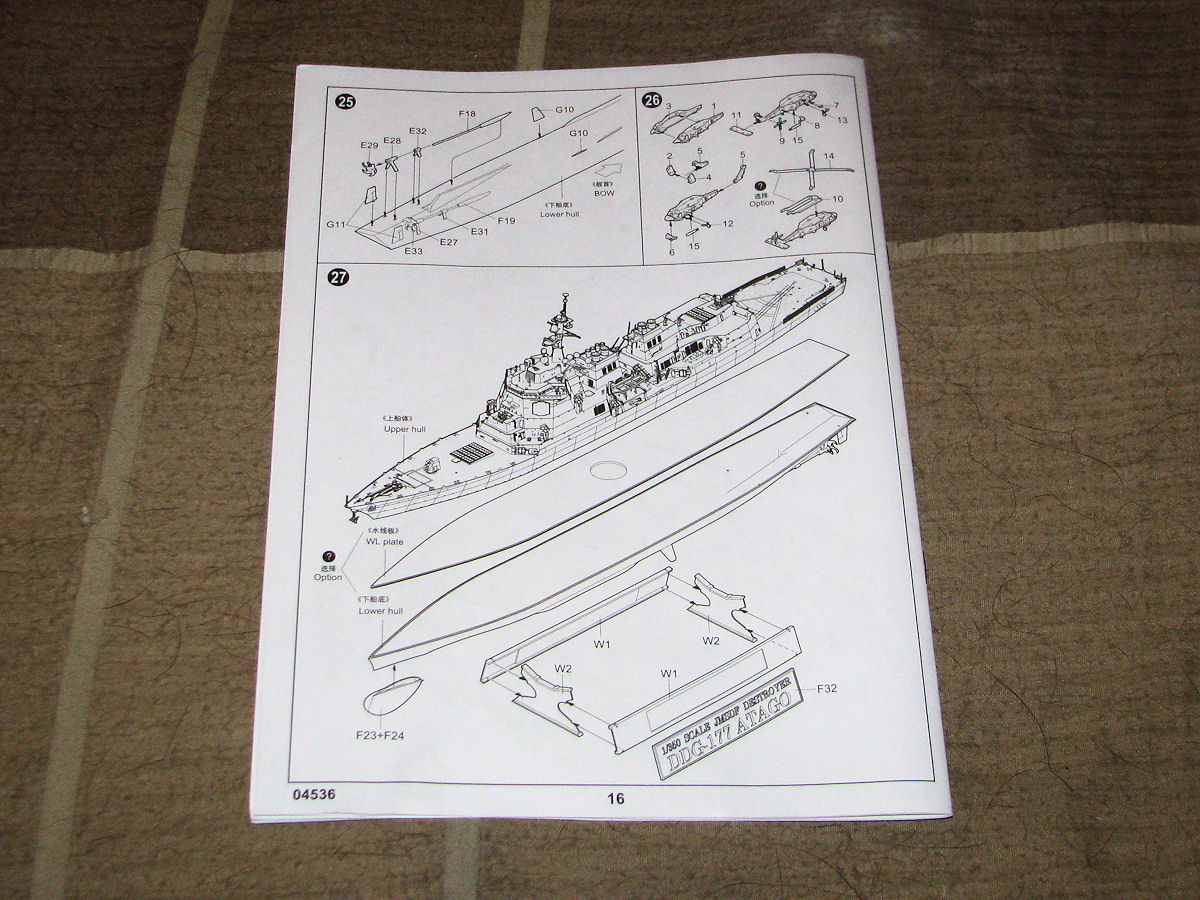
I paint the vertical surfaces, including the hull above the waterline in Mpodel Master neutral gray, and the various weather and auxillary decks (the horizontal surfaces) in testor's flat gray. I started this model by adding the sonar dome to the forward portion of the hull below the waterling, and then the shats (and their supports) and the rudders to the stern of the huill below the waterline.
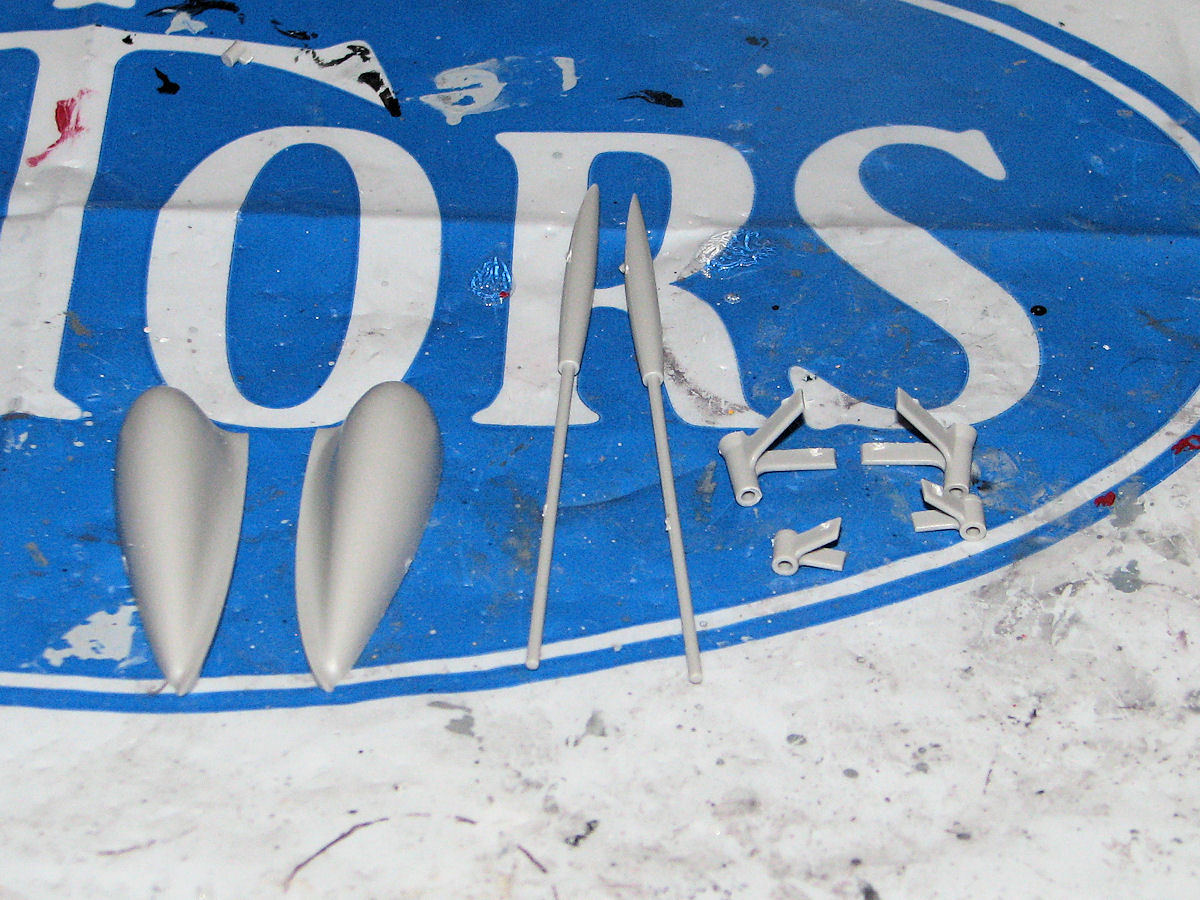
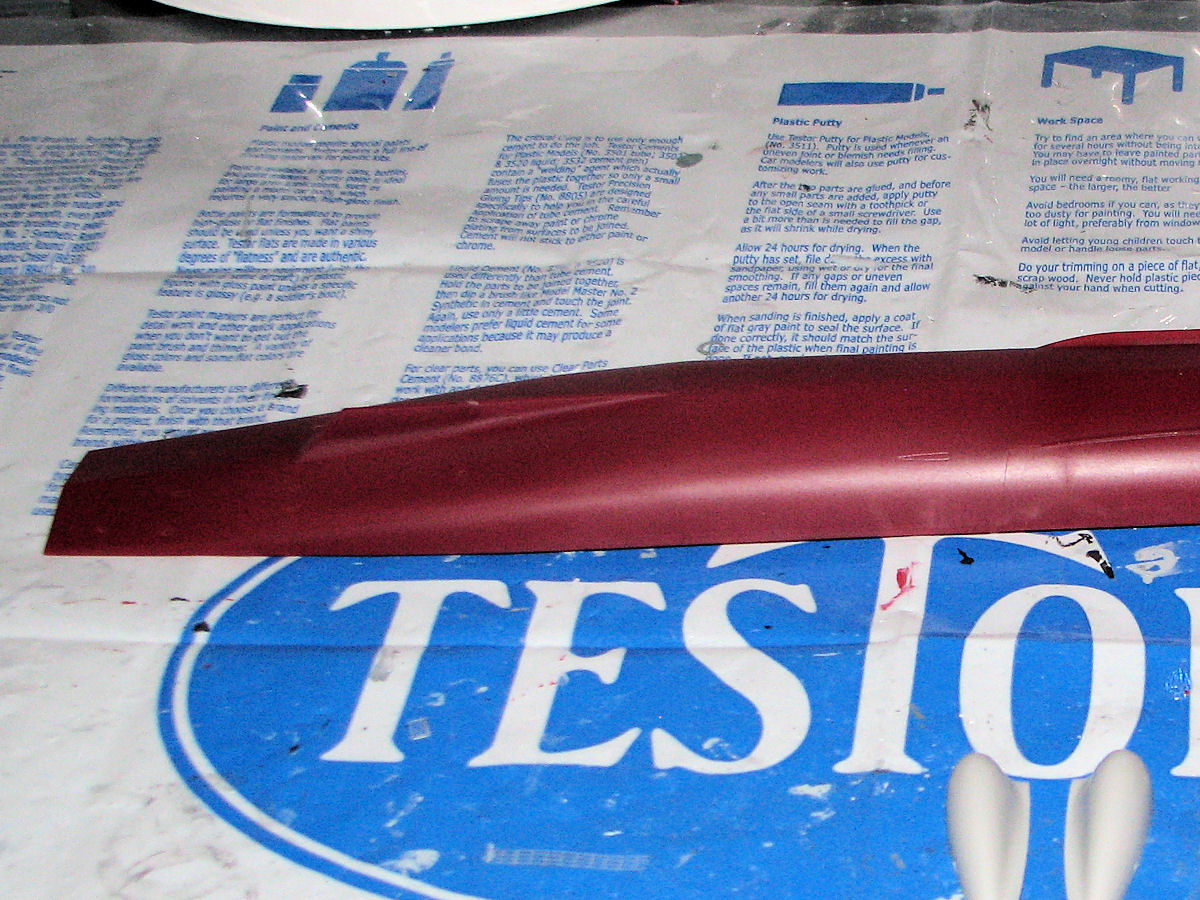
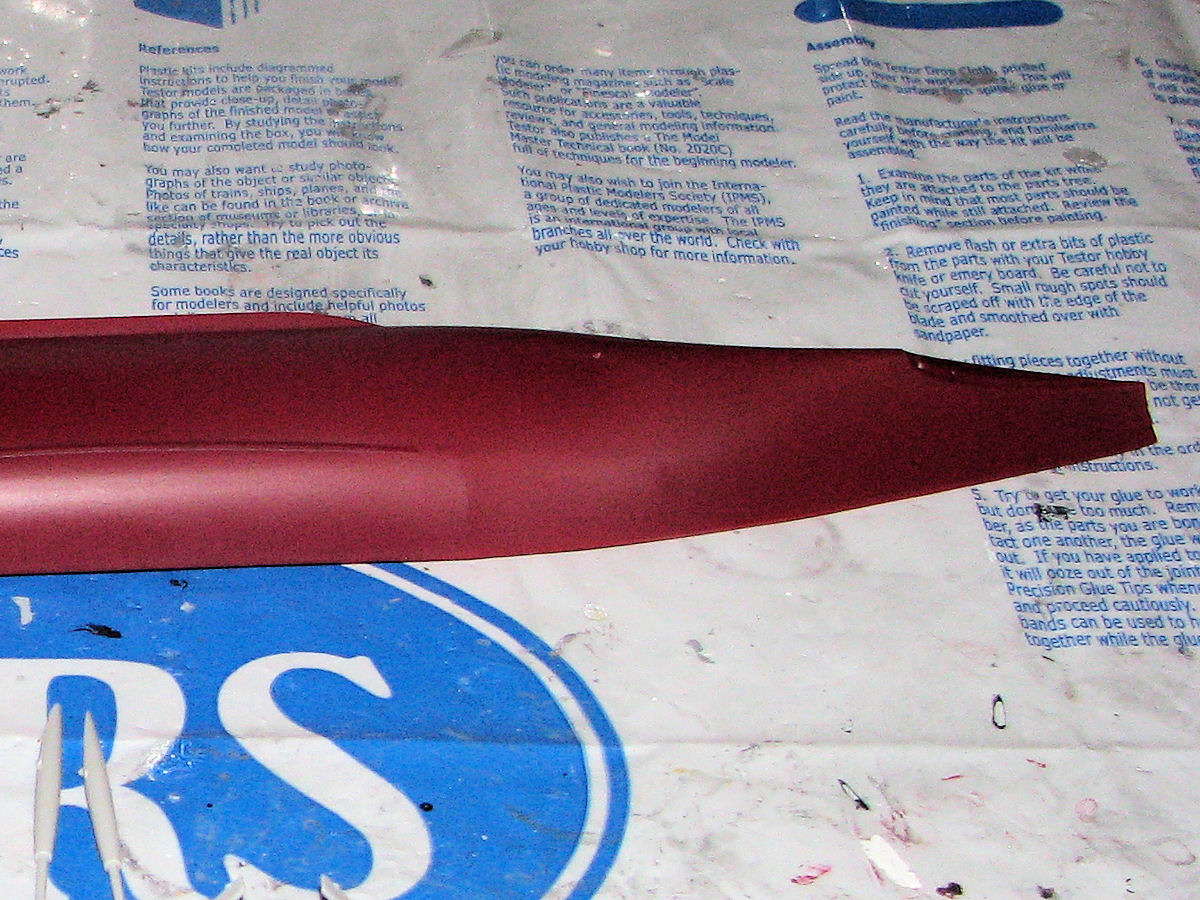 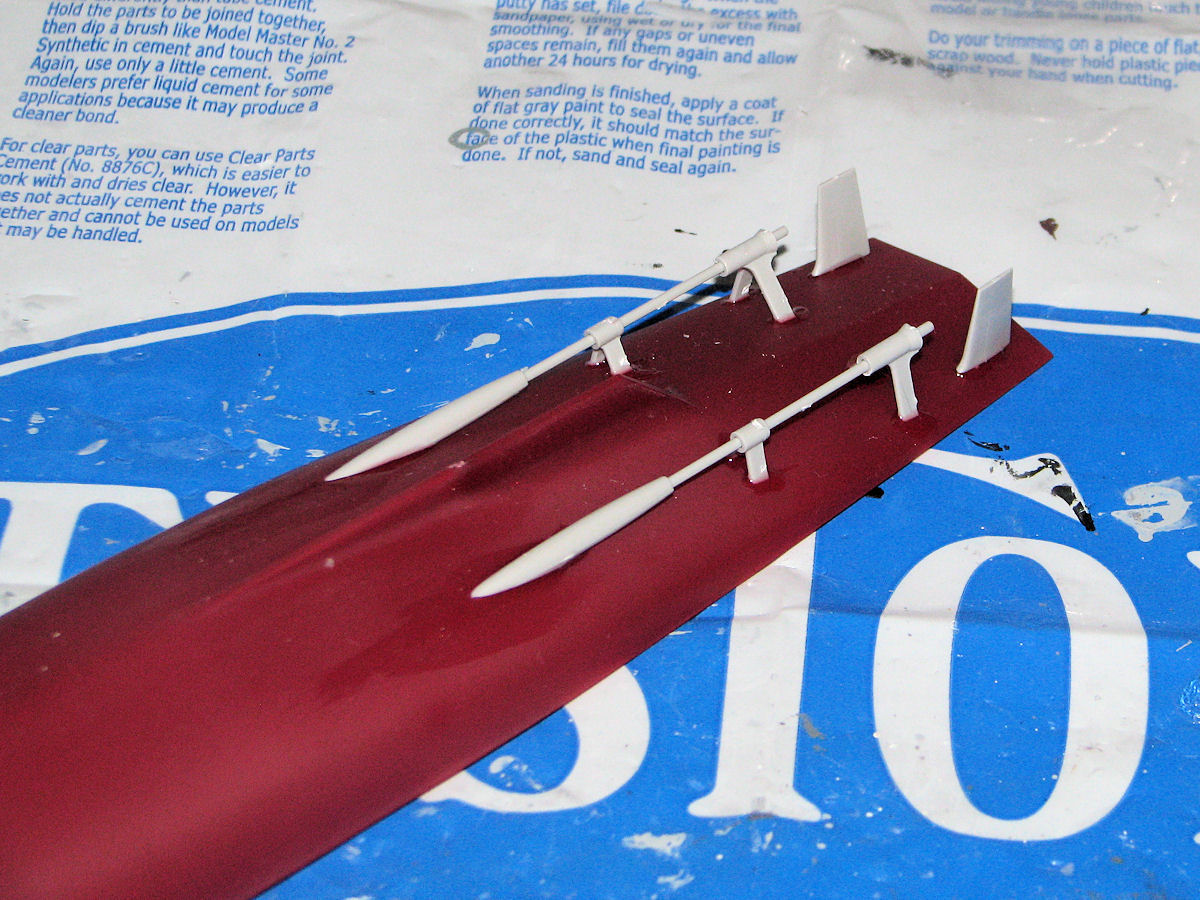
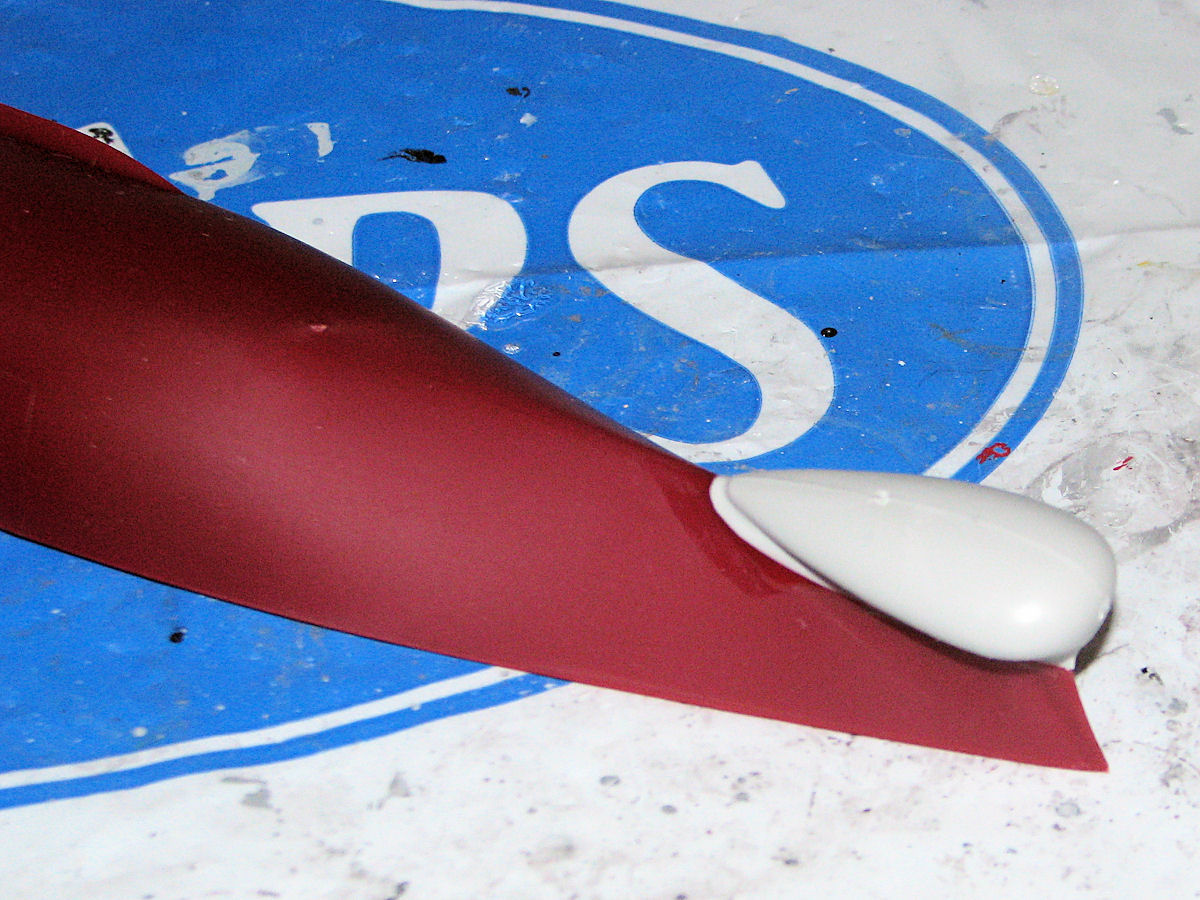

I then painted the entire lower hull (below the waterline) in hull red. I painted the upper hull in neutral gray, and then masked off and painted the waterline mark in flat black.

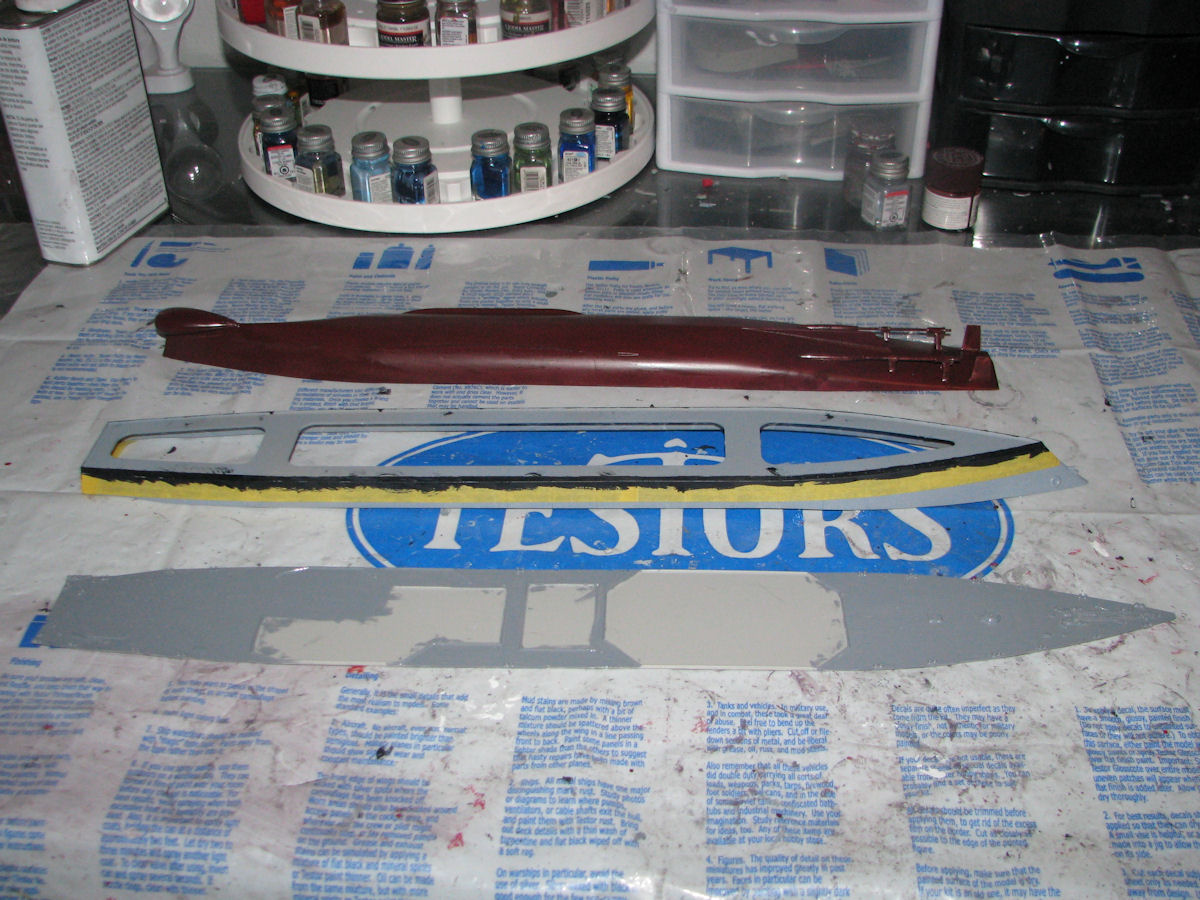
And that is as far as I got with this first session. In the next session I will add the decals to the main deck and then build the main deck houses for the vessel.
I began this session be gluing the upper hull to the lower hull. I then added the main deck decals. I do this at this stage because a number of them would be very difficult to add after the weapons, equipment, and other deck decals and deck houses are added. I also added the main gun, a DP 127mm (5"), 62 caliber gun.
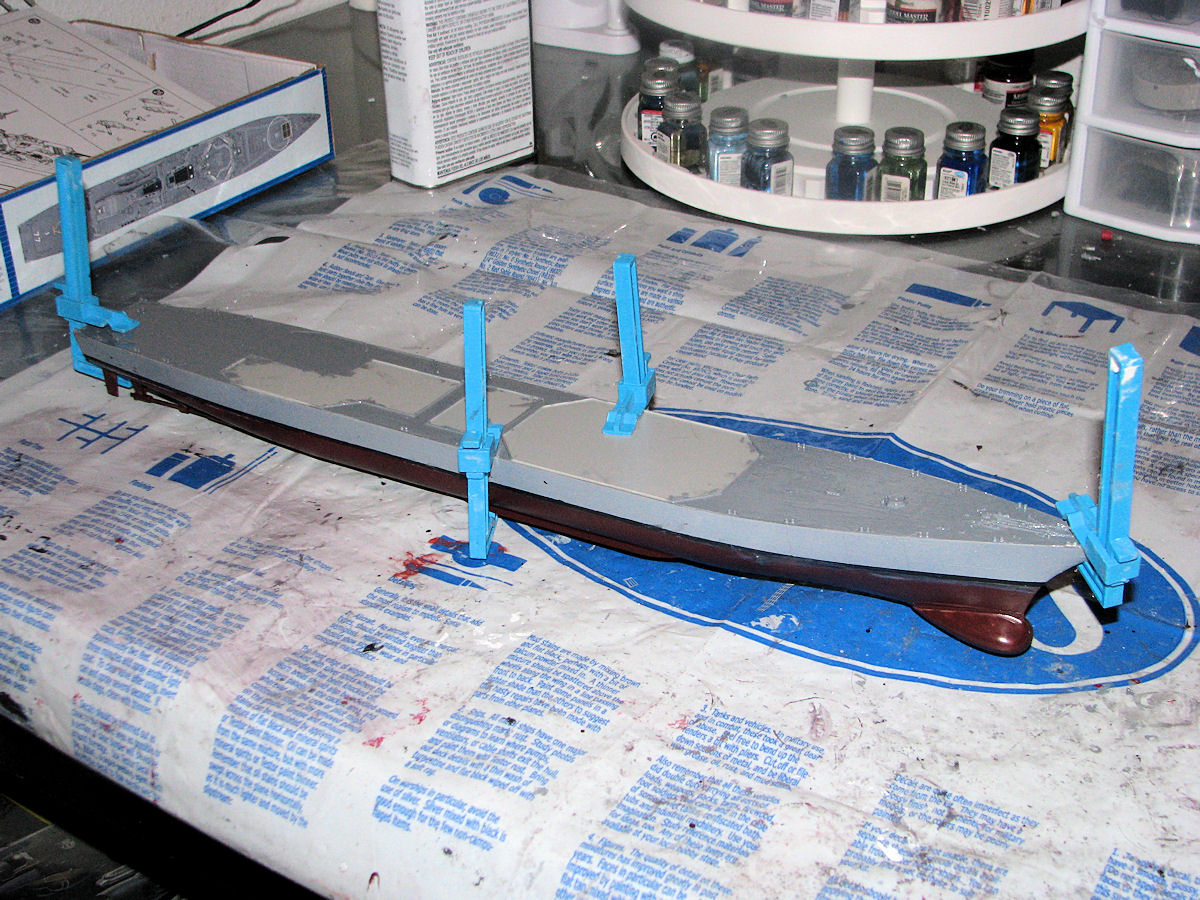

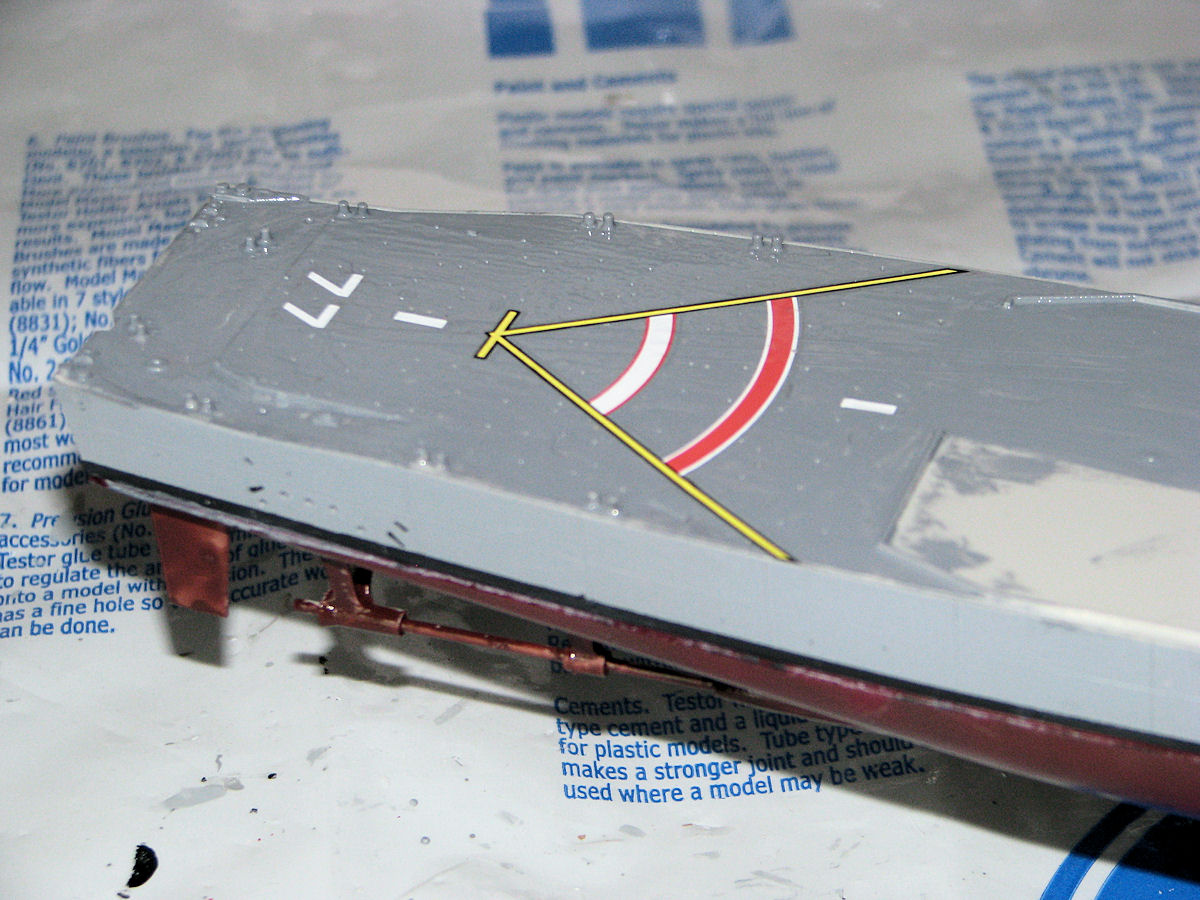
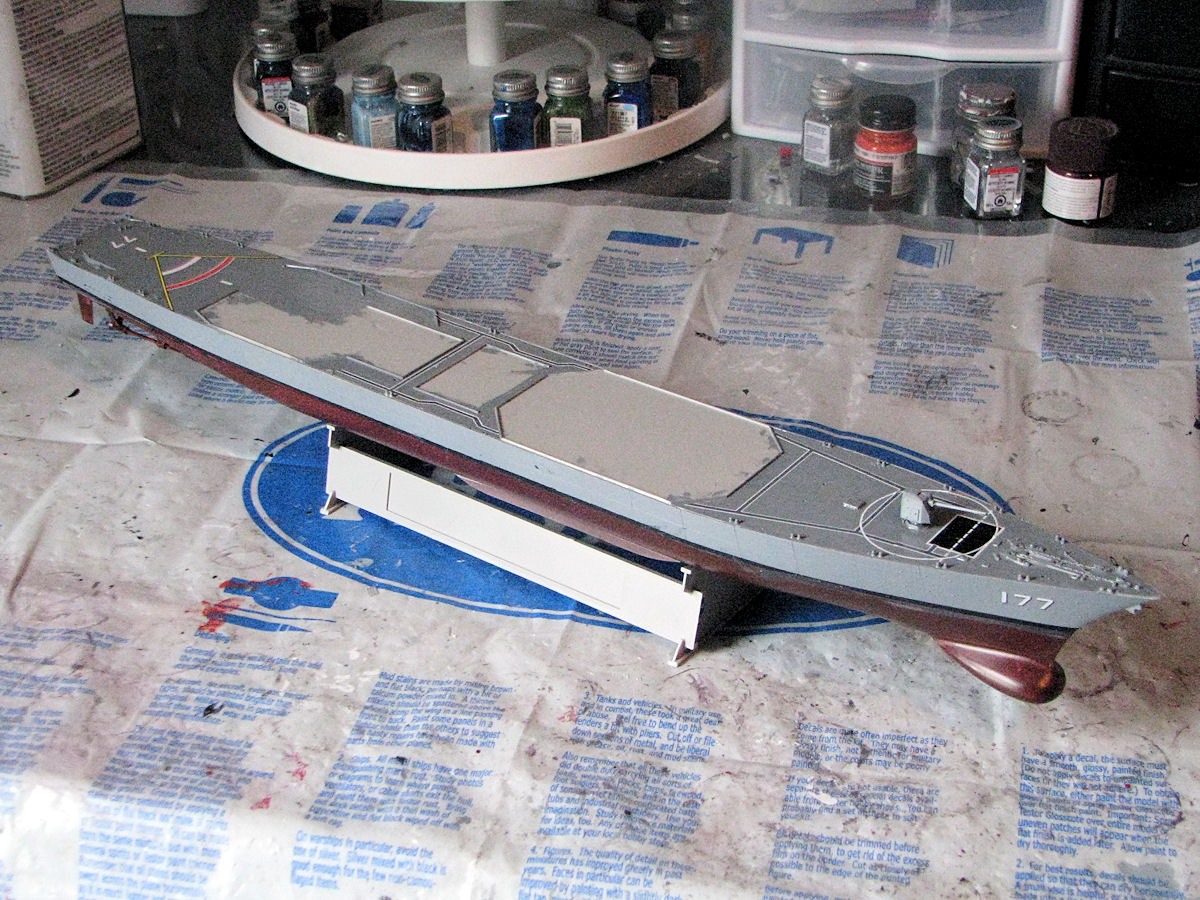
Once that was completed, I began to build the bridge and APAR deck house. This is the central nervous system of the ship. Trumnpoeter does an excellent job of detailing these parts of their newer 1/350 scale ship models. There are numerous parts, and you have to ensure that you trim off any excess attach mateiral after taking them off the sprues. But they go together nicely oif you are careful and produce a really nice assembly.
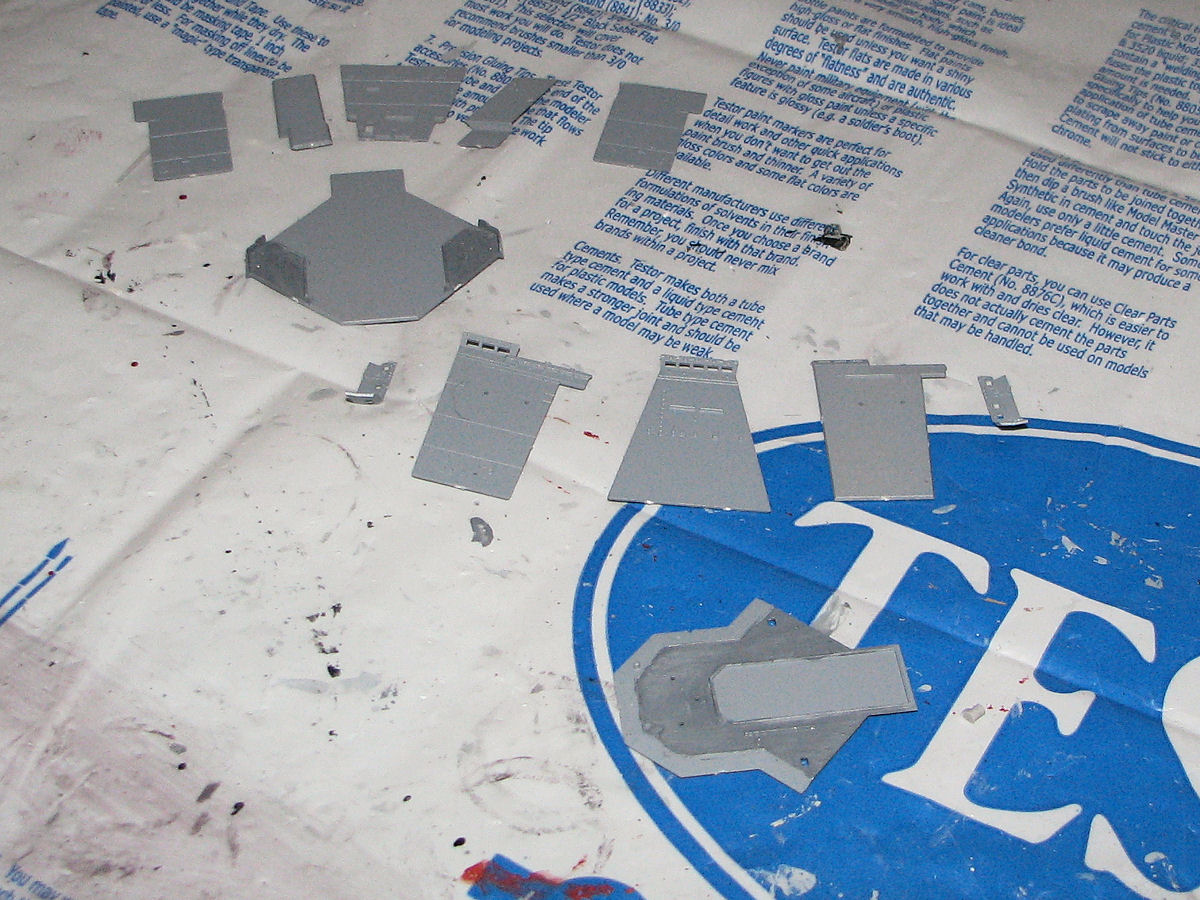
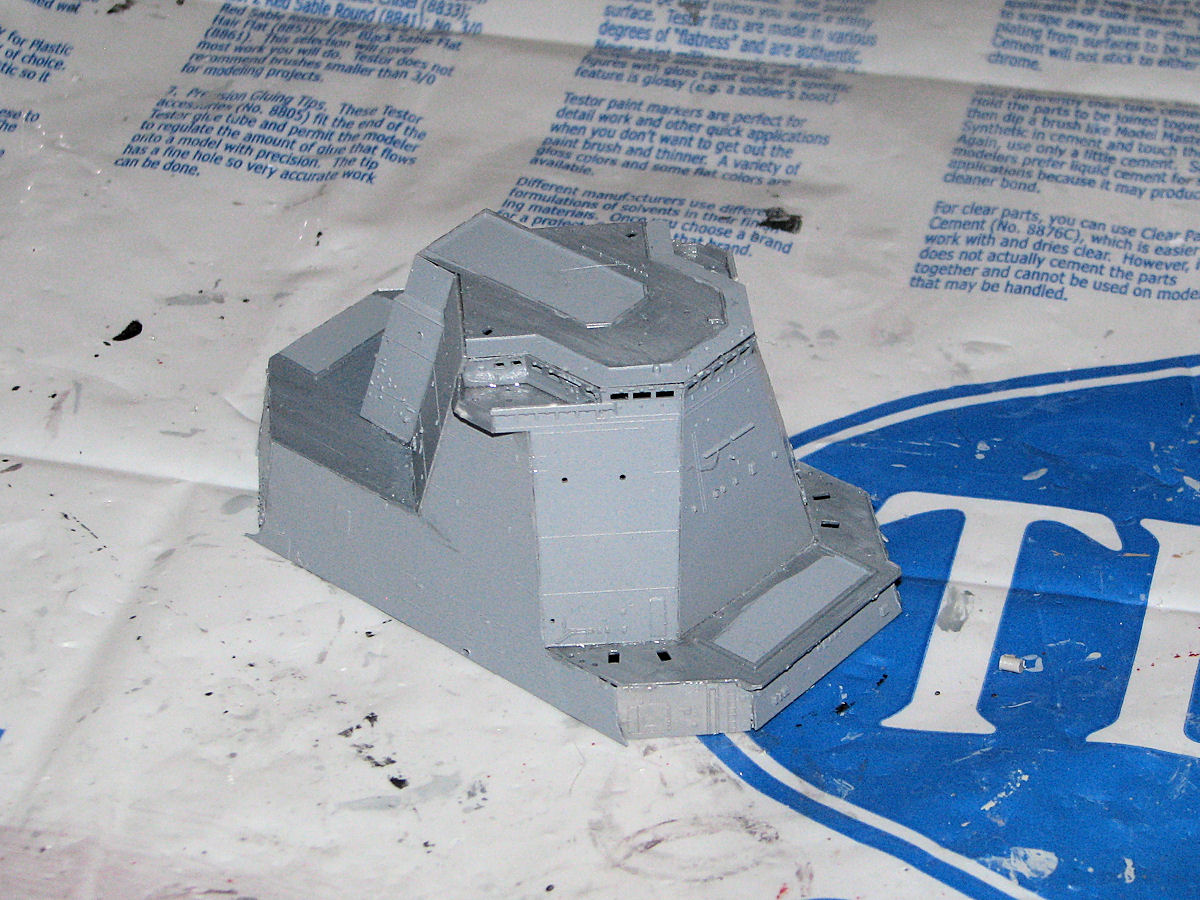
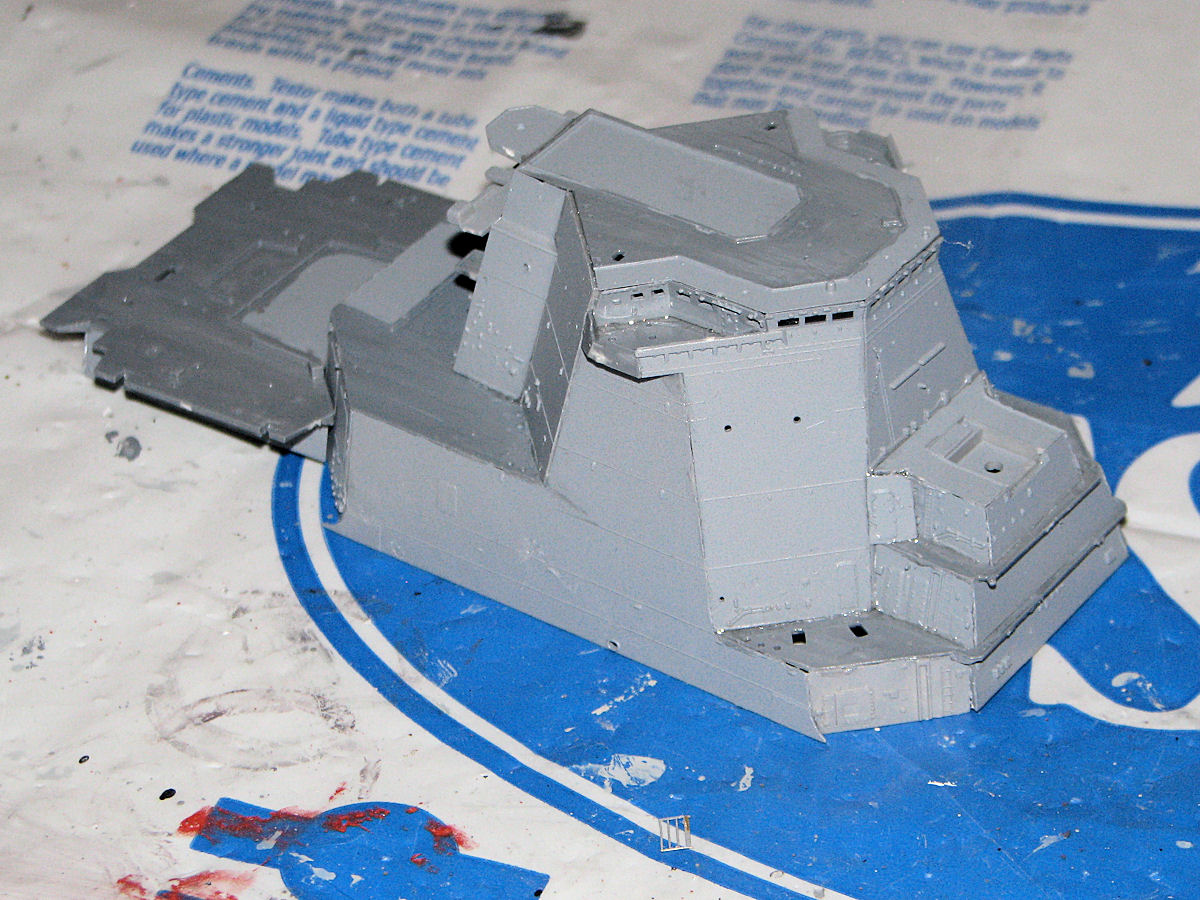

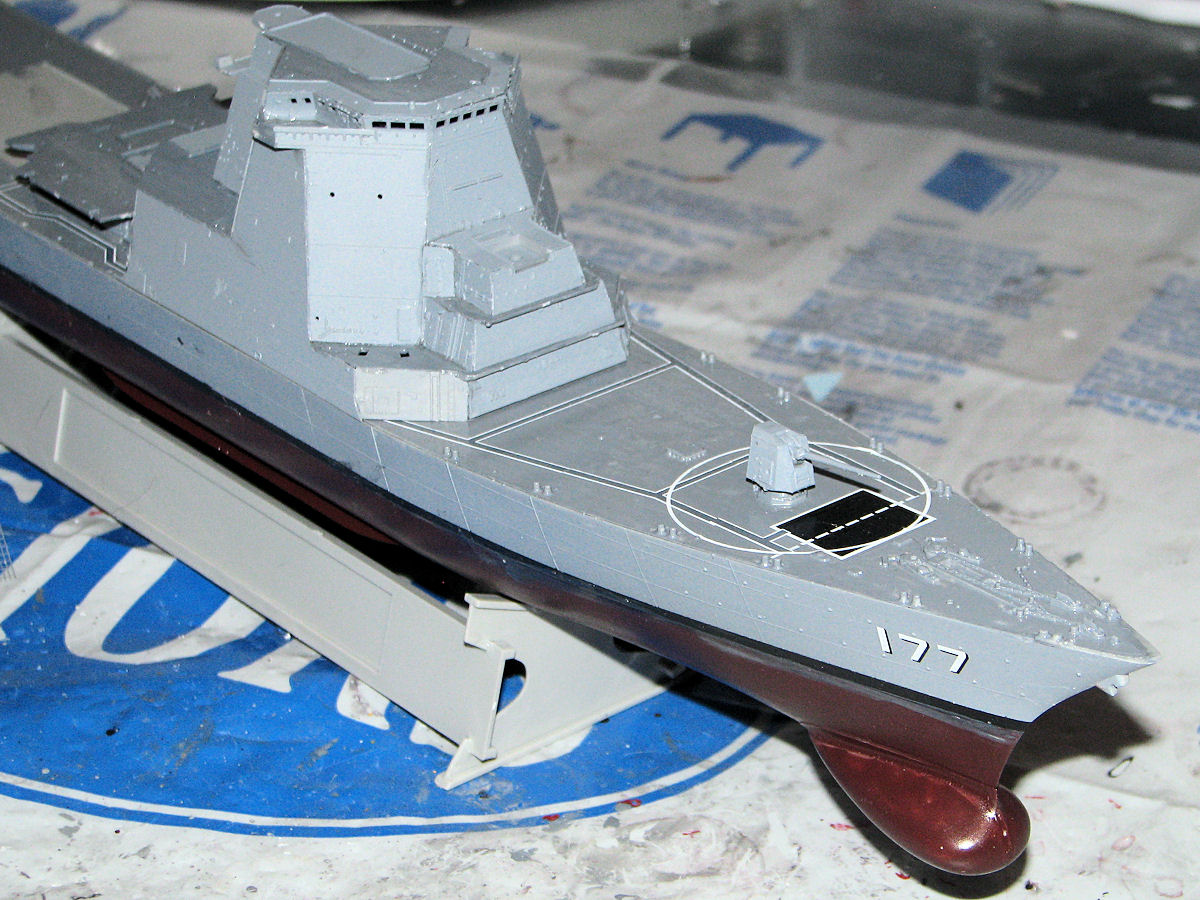
I then added the forward smoke stack for the forward deck house, and built the after VLS deck house and smoke stack, which I will add to the aft deck house, which also includes the helicopter hanger.
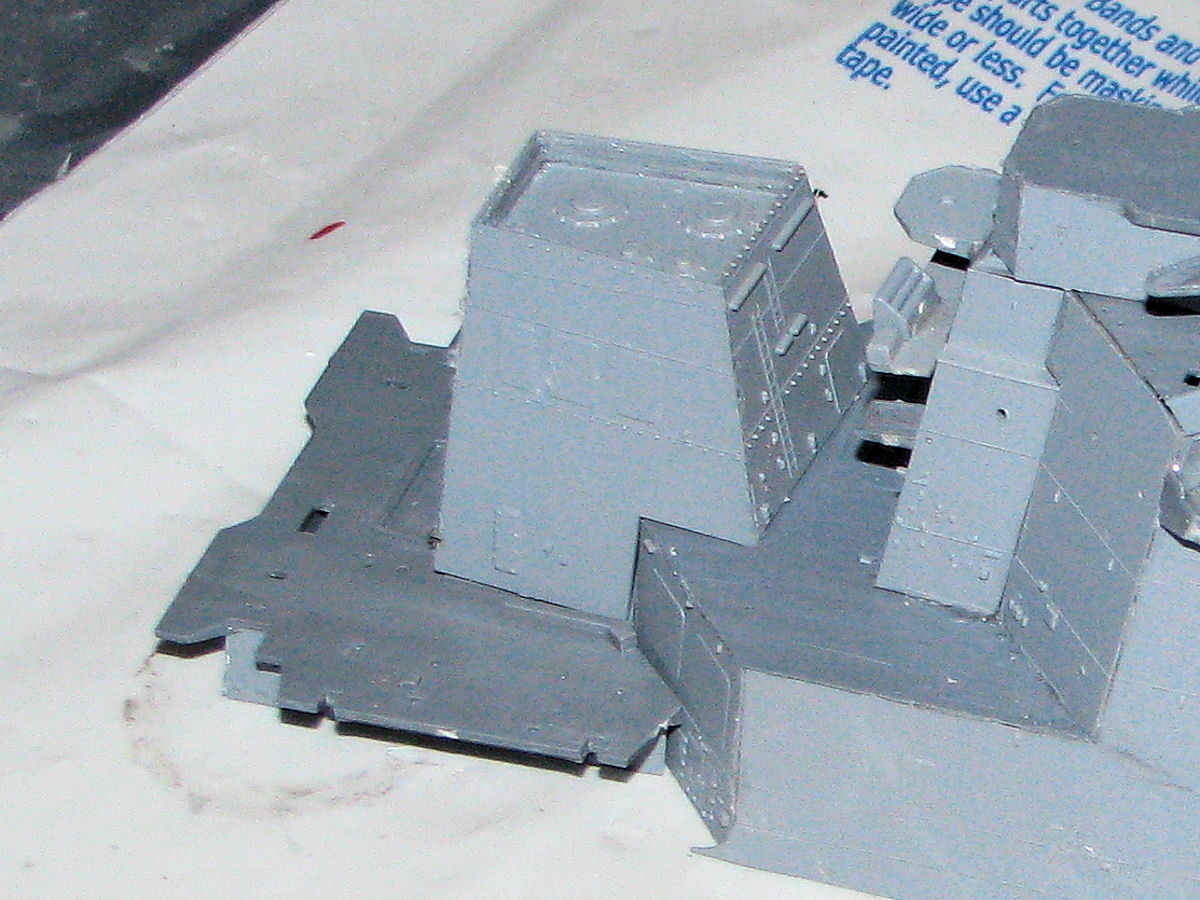
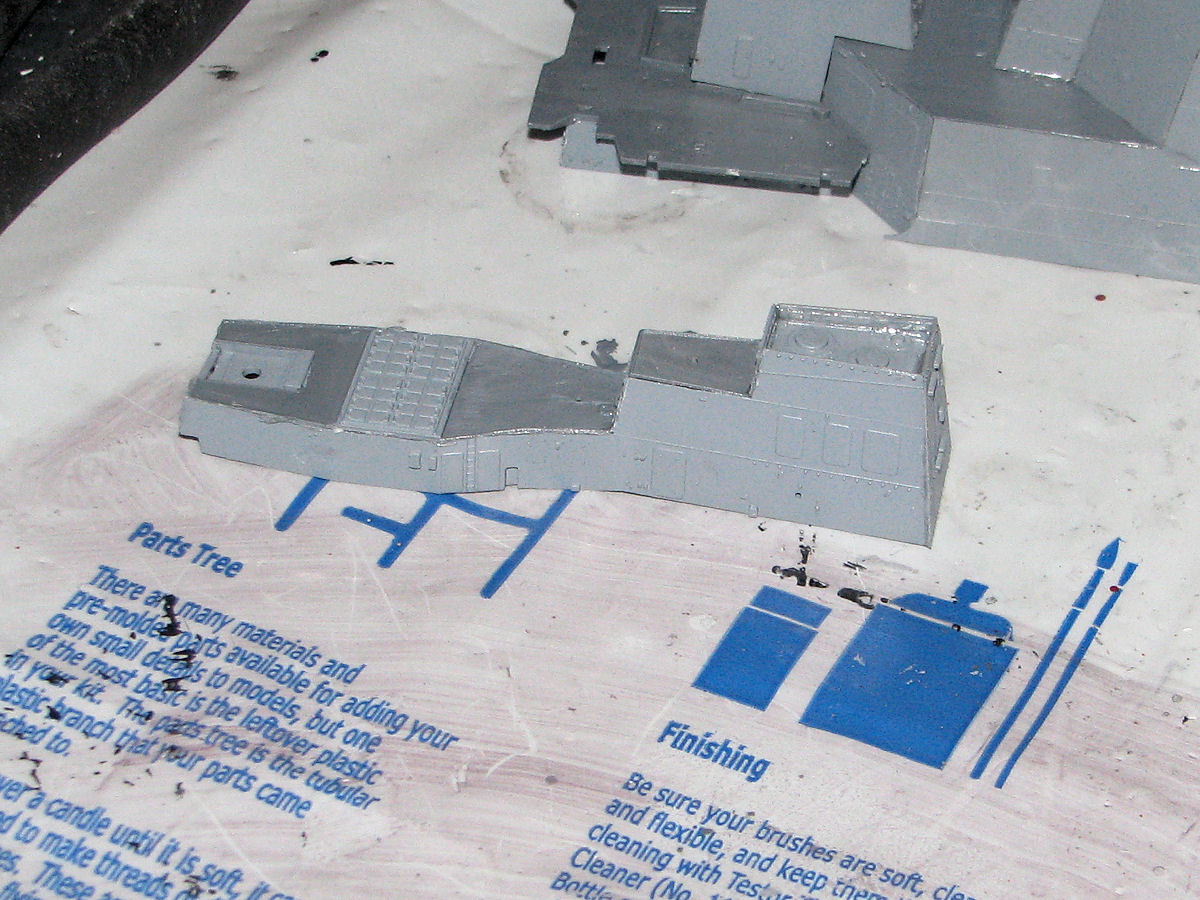
I then assembled the main aft deck house and added the VLS and Smoke stack to it. This completed all of the main deck houses.
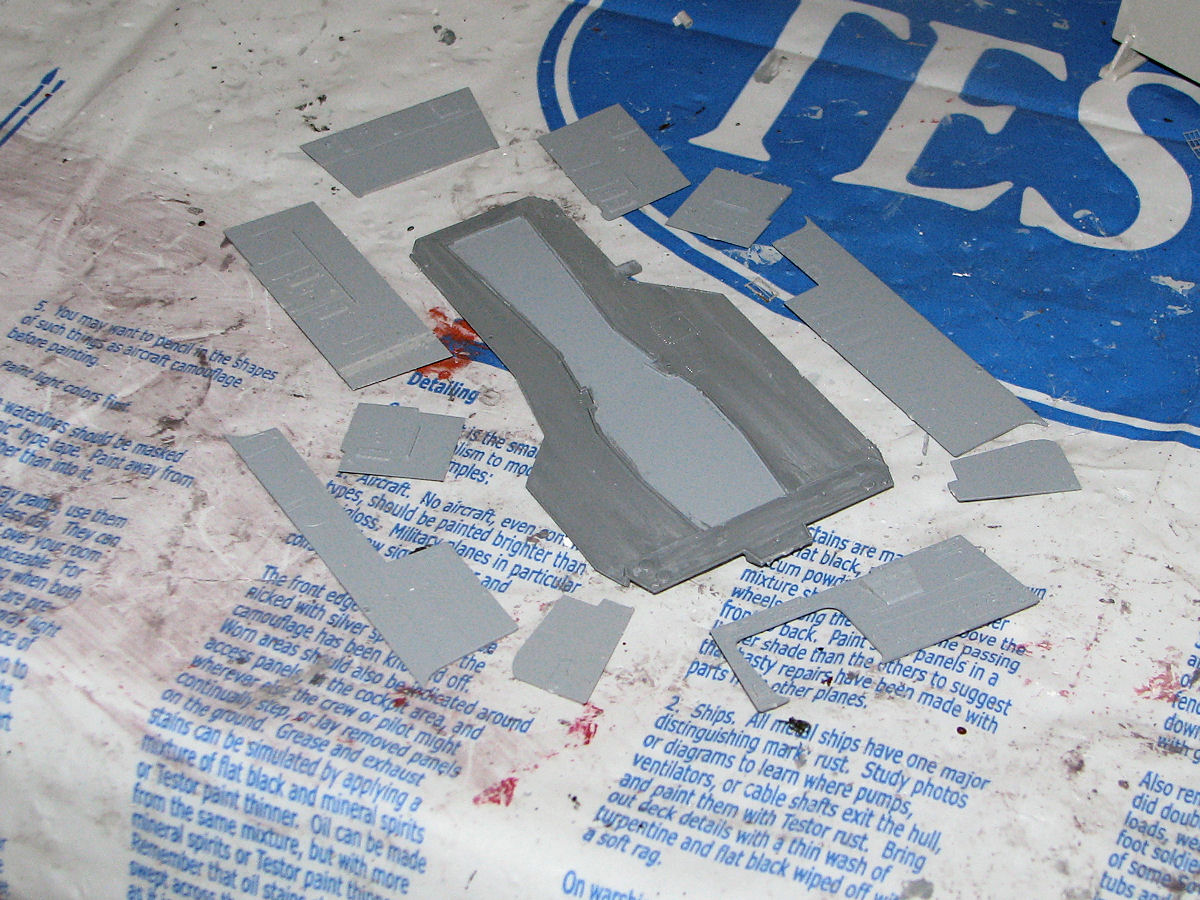
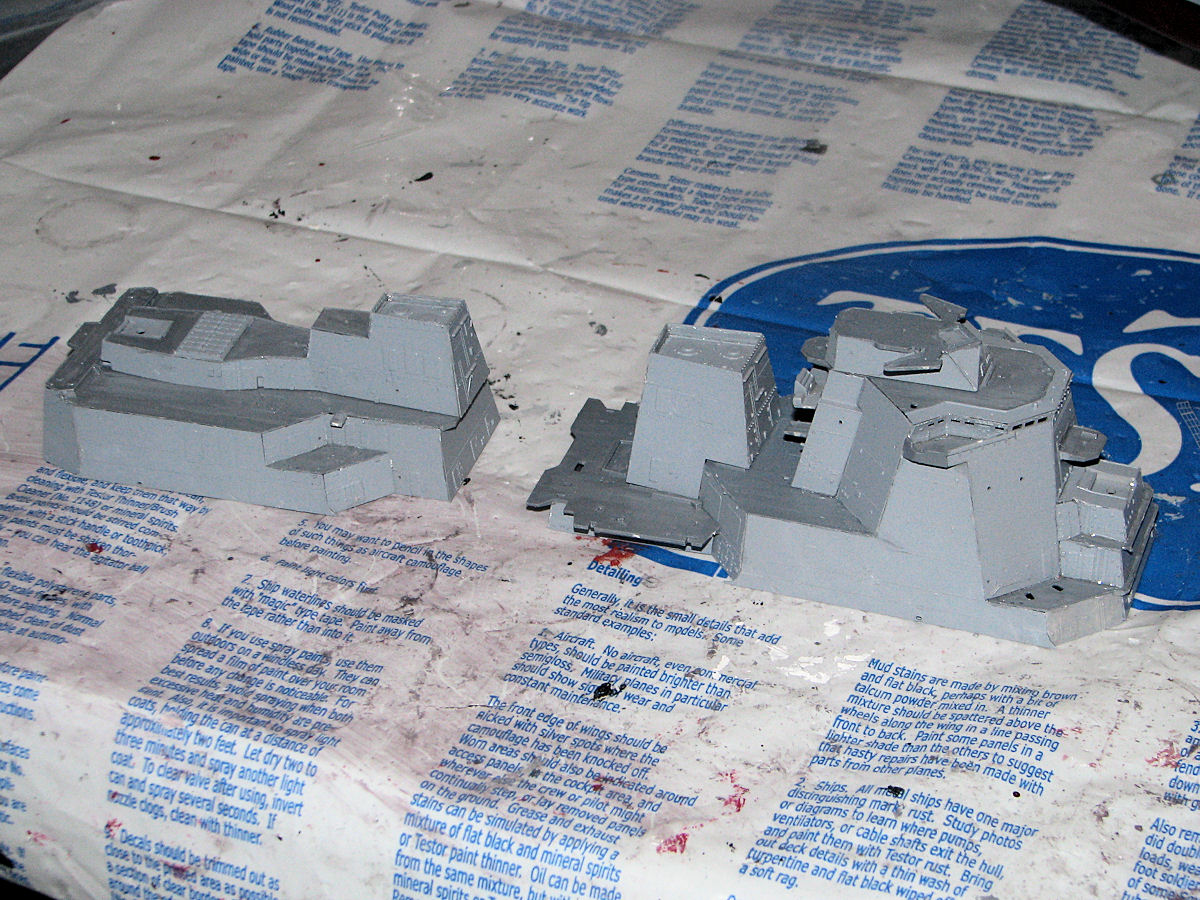
And with that, I then dry fitted these parts to the main deck.
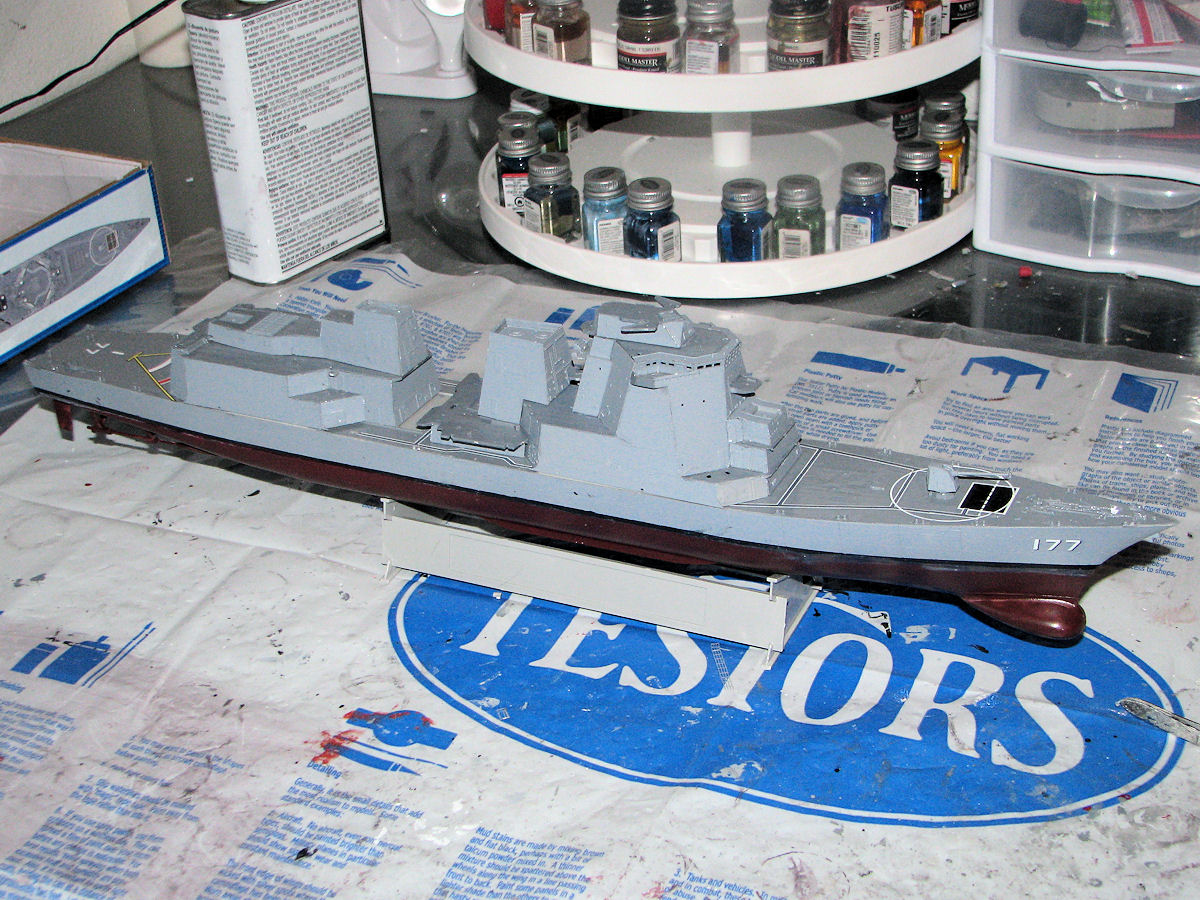
Now that is looking like a full blown Atago Class AEGIS destroyer. In my next session I will add the main mast, the funnels for the engine exhaust, and the numerous details for these deck houses.
There was lots to do in this session. I began this session by building the main mast and assembling the hanger, and then gluing the aft deck house with the hanger to the vessel. I then glued the main mast to the vessel (atop the bridge), and added the decals to the main deck of the vessel, including the helicopter landing markings aft of the hanger.

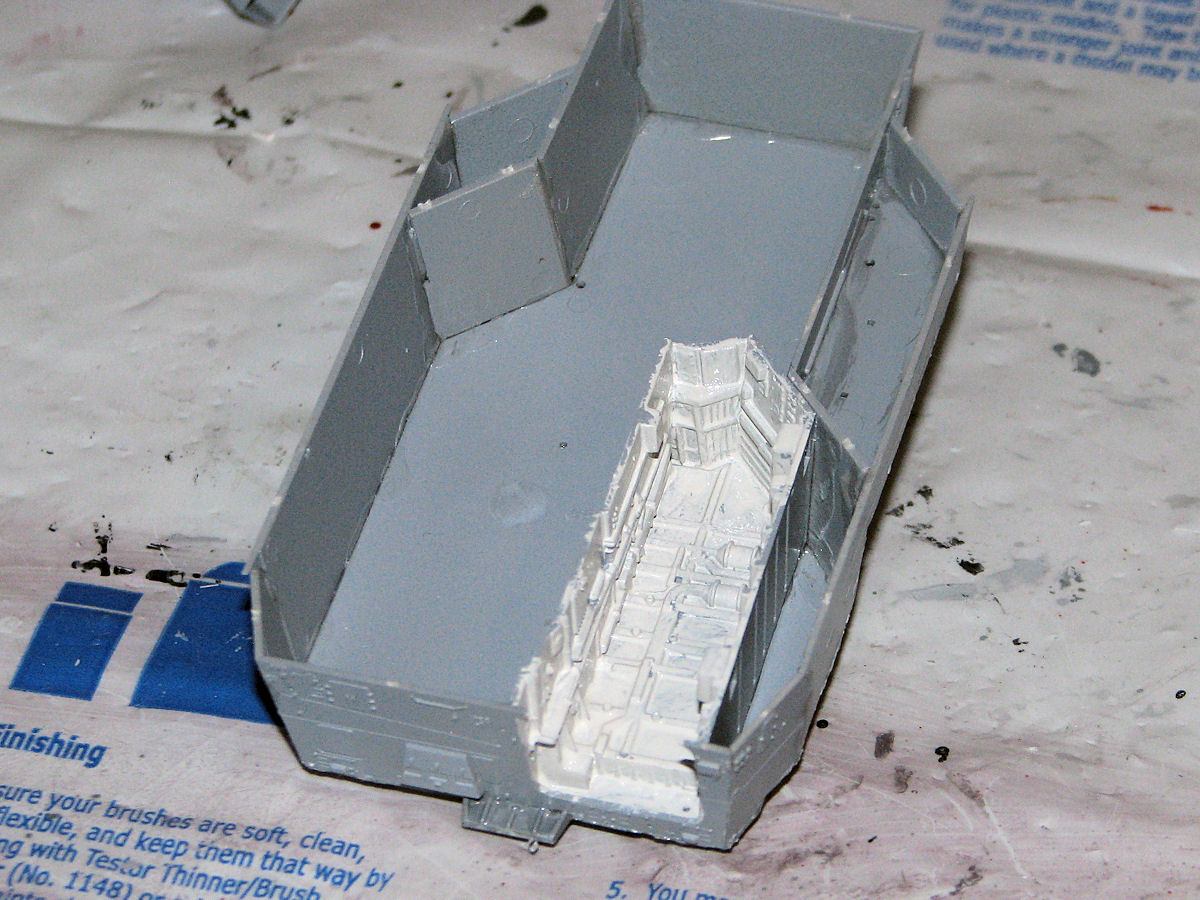
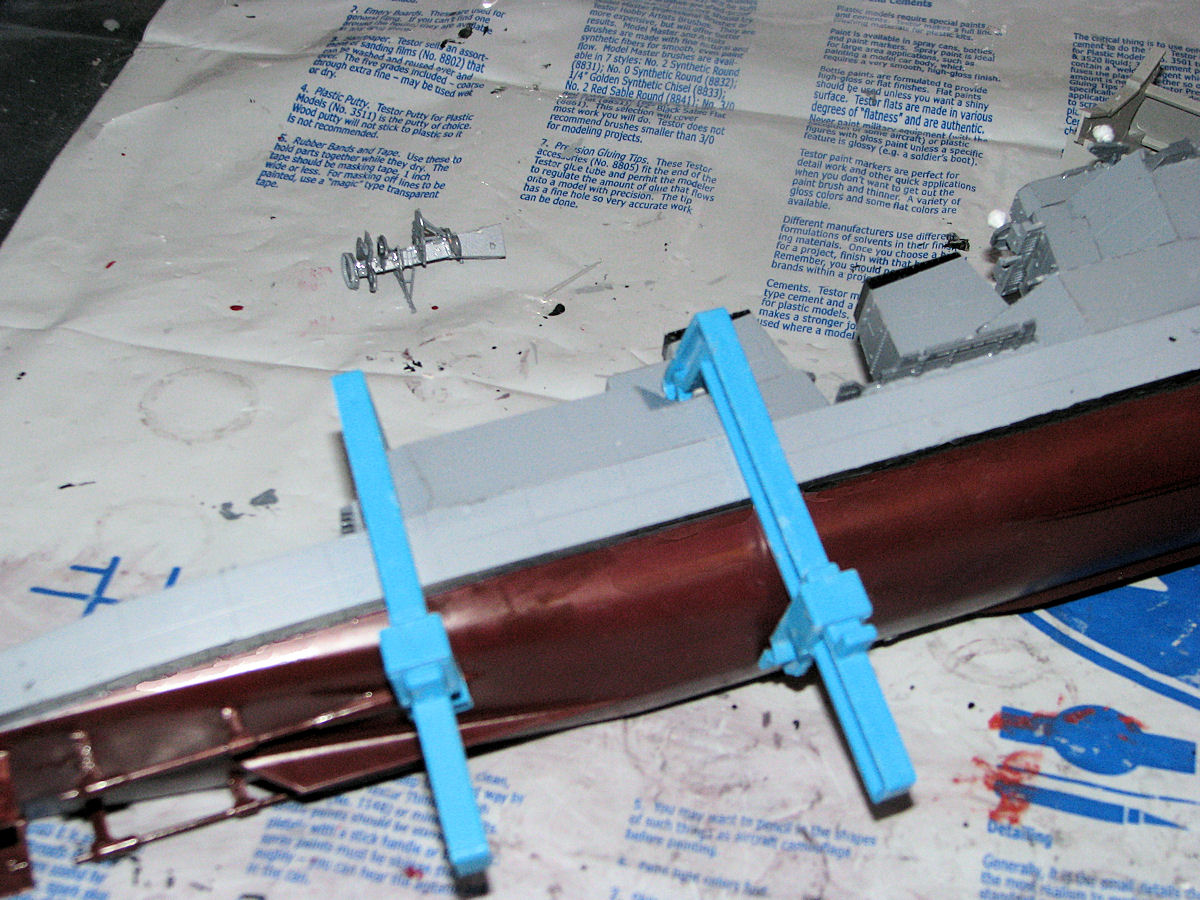


I then began to build the small assemblies for the life rafts that the JMSDF utilizes on its destroyers, as well as the weapons systems...the Anti-surface missile launcher quad cannisters, the two Phananx 20mm close in weapons (CIWS). I glued these in place and then glued the life rafts to their holders. Tow per holder, eight holders altogether. This makes for 16 life rafts, which hold 20 personnel each, or a space for a ttoal of 320.
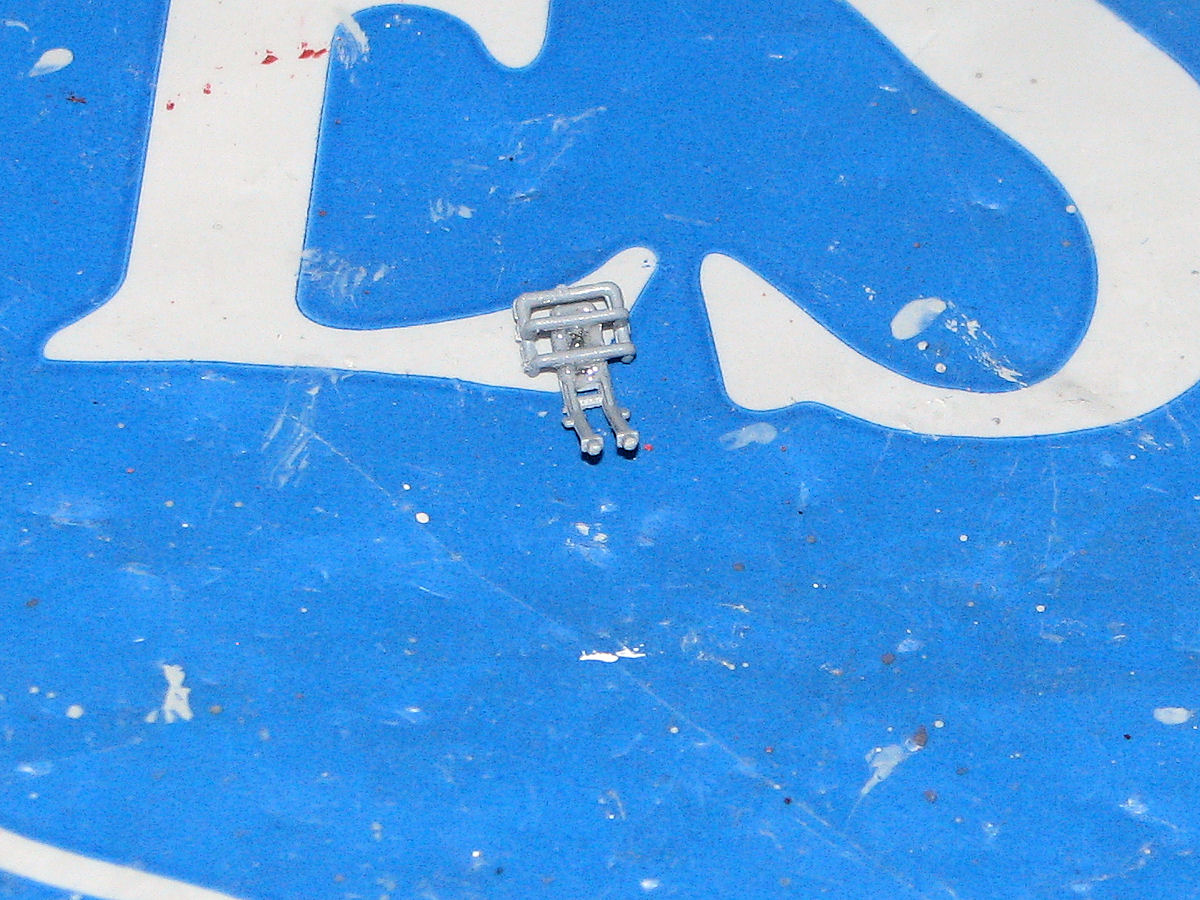
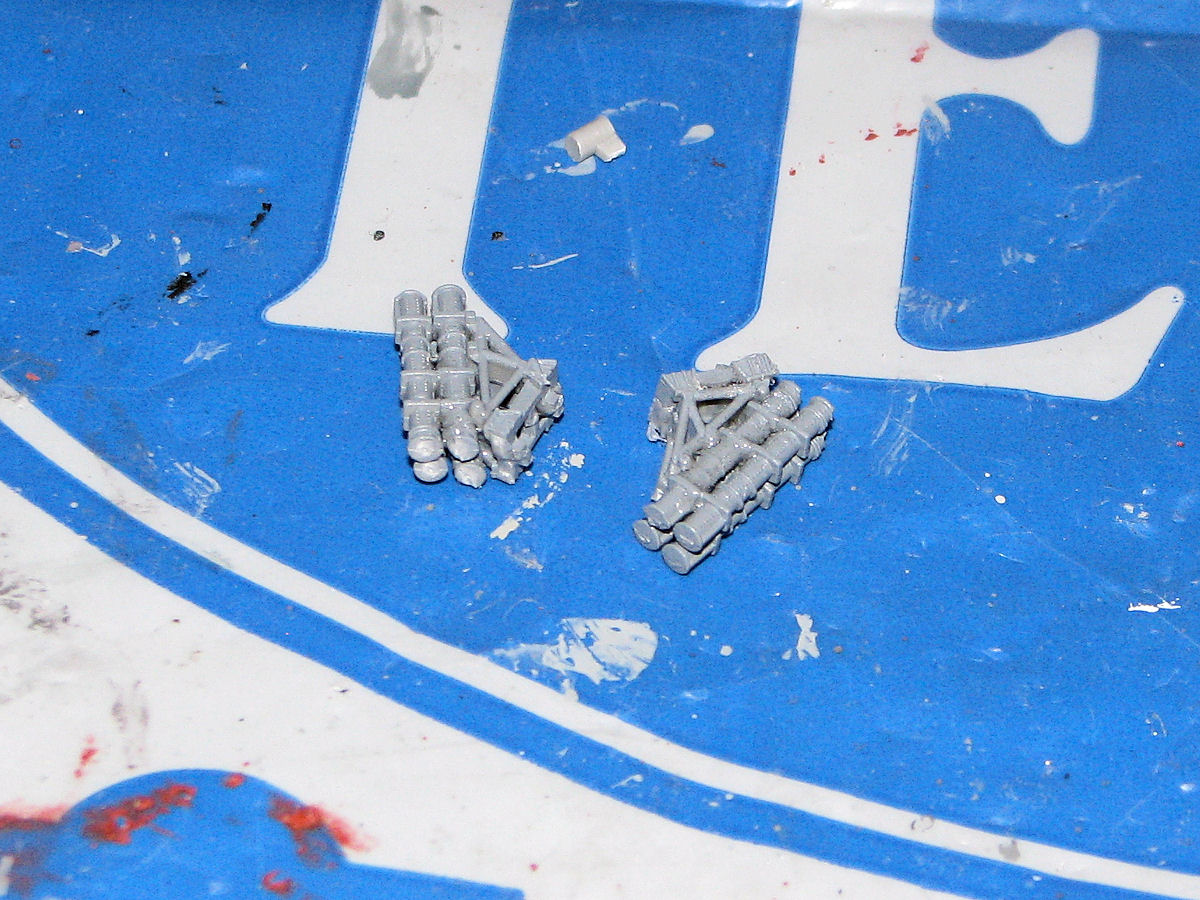
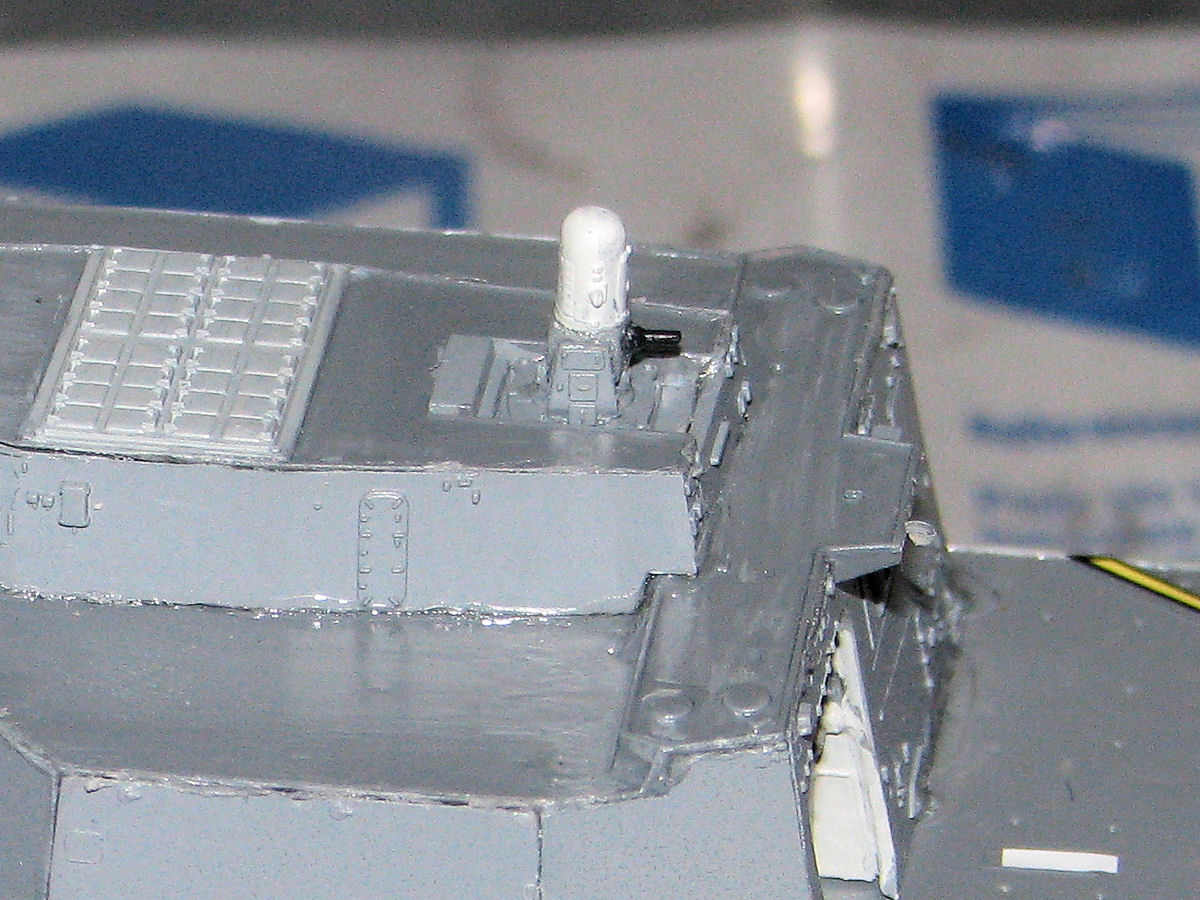
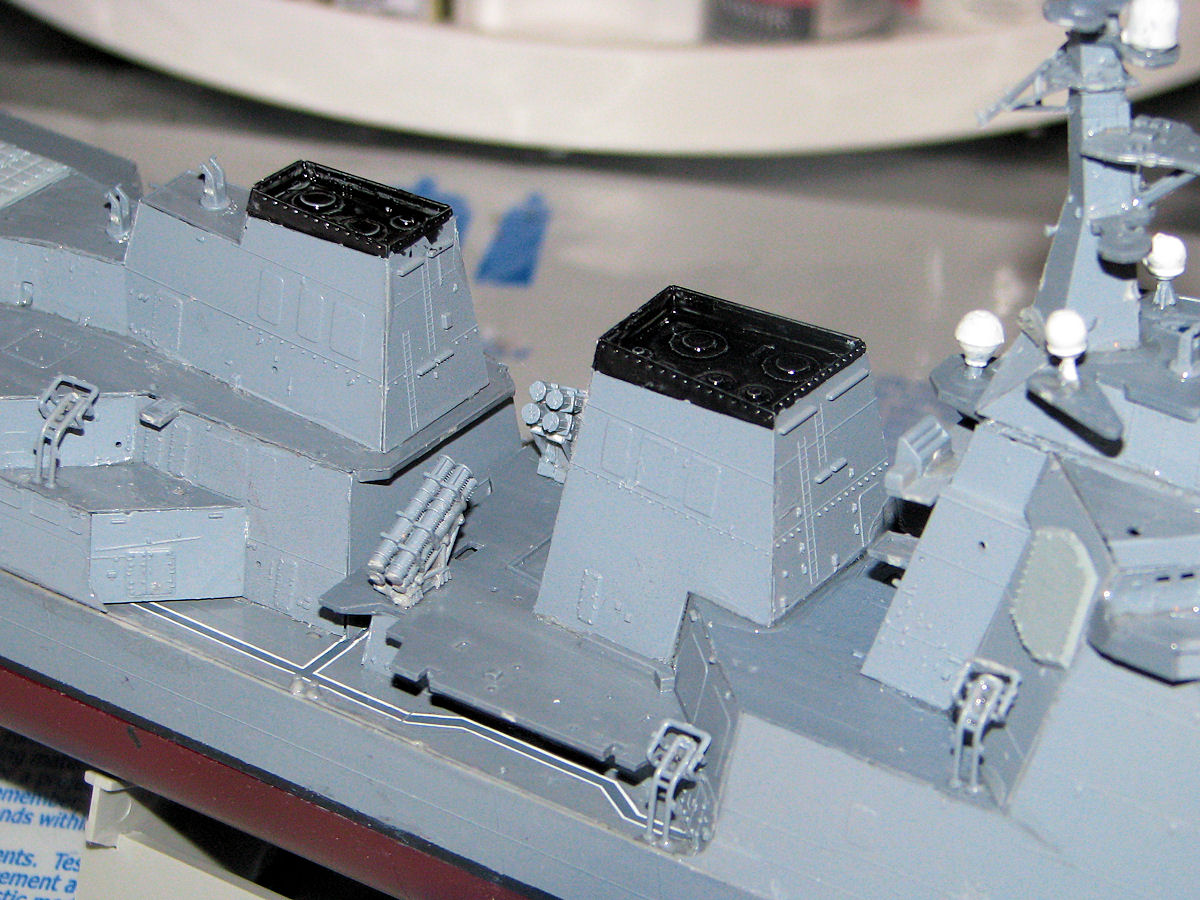
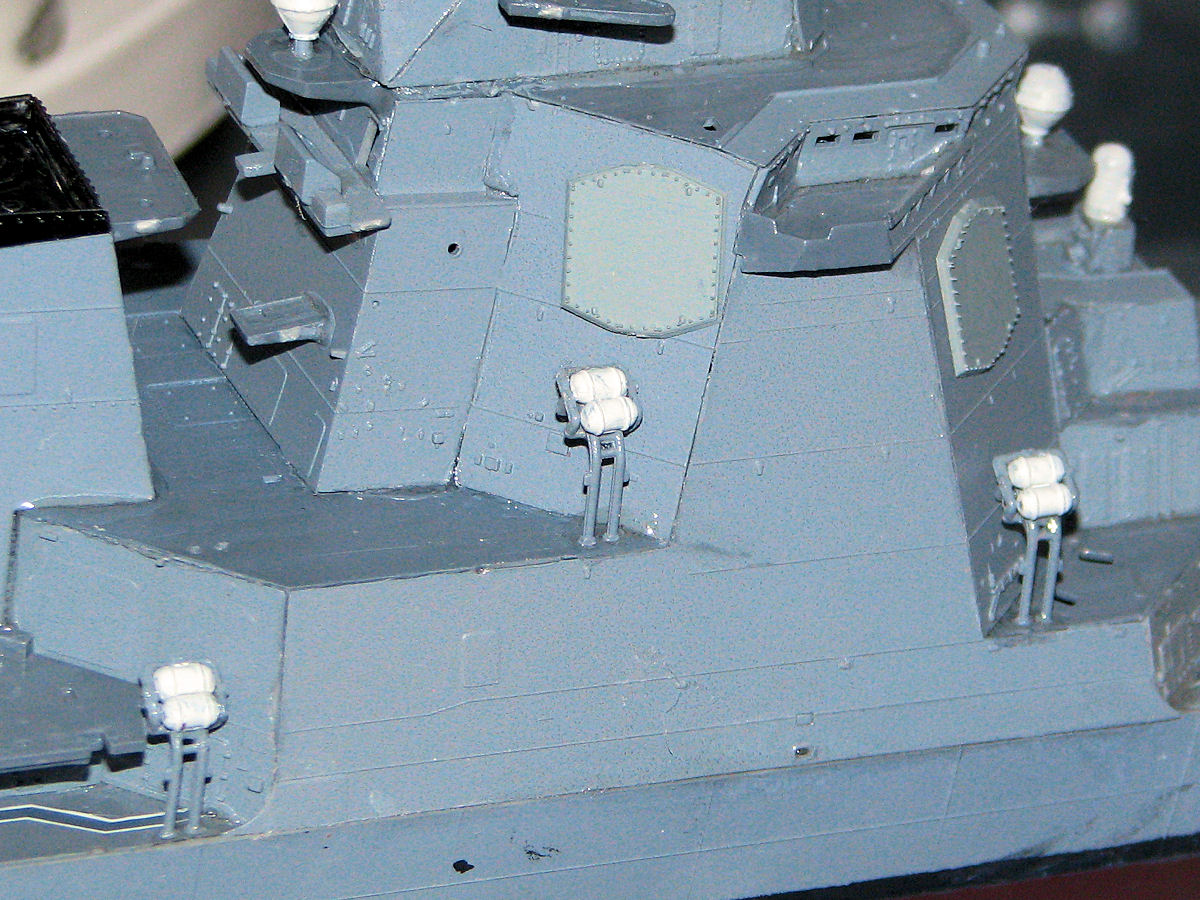
At this point I built the ships launch davit and the launches themselves and added them to the vessel. Also the myriad of small details and equipment around the vessel...from antennae, to sensors, seerach lights, etc. I also used photo etch stairways in place of the plastic stariways that came with the model. This makes for a lot more realism in the detail work as shown.


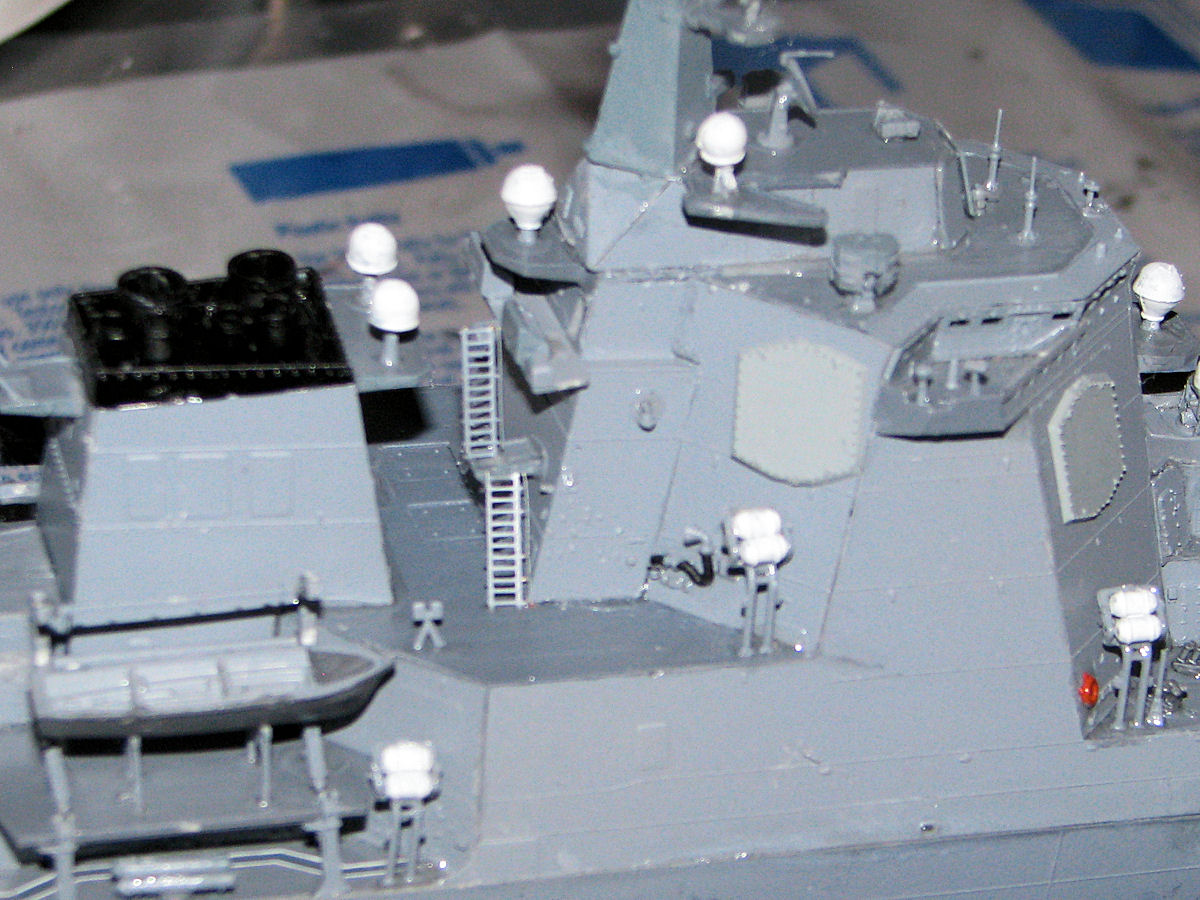


I then decided to go ahead and build the detailed Mk-41 VLS assembly that comes with the model. I built the 64 cell version, which included eight, eight-cell sub-assemblies. The kit includes several missiles that can be used in these common launchers and I elected to show the following as they would appear exiting the launch tubes:
1 x Tomohawk Cruuise missile The JMSDF does not employ the cruise missiles, but it does emply all of the others. Once this was completed, I then placed it next to the vessel, and then on top of the forward, 64-cell launcher to show the space such a system takes up on such a vessel.
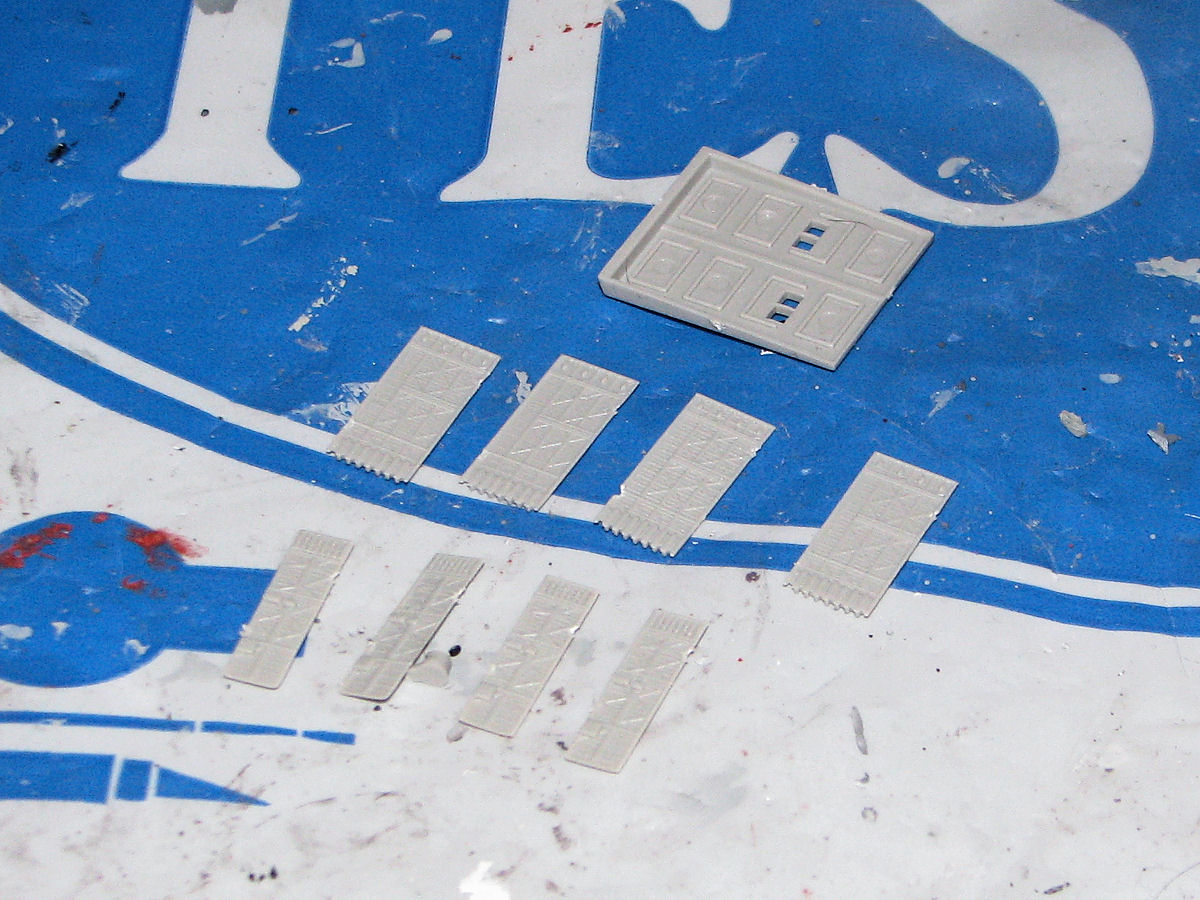
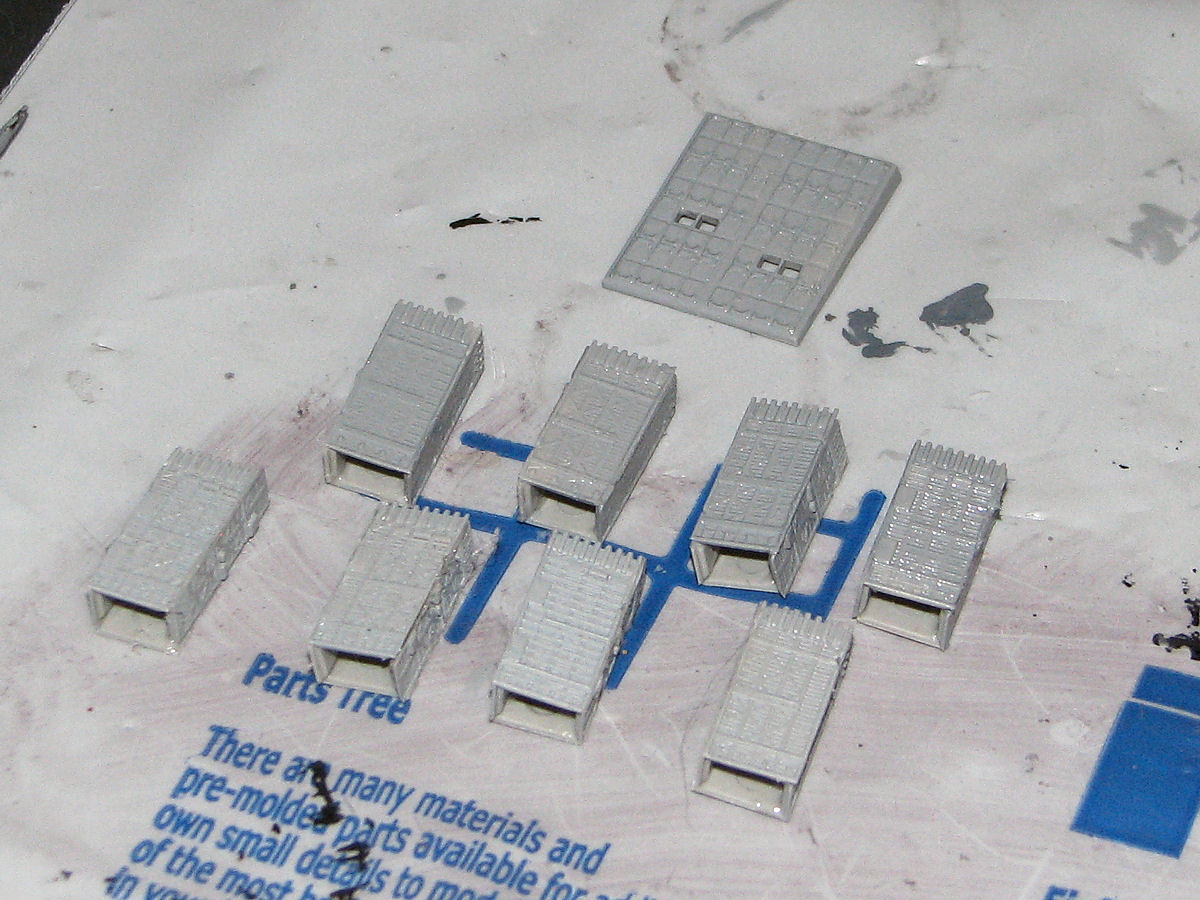
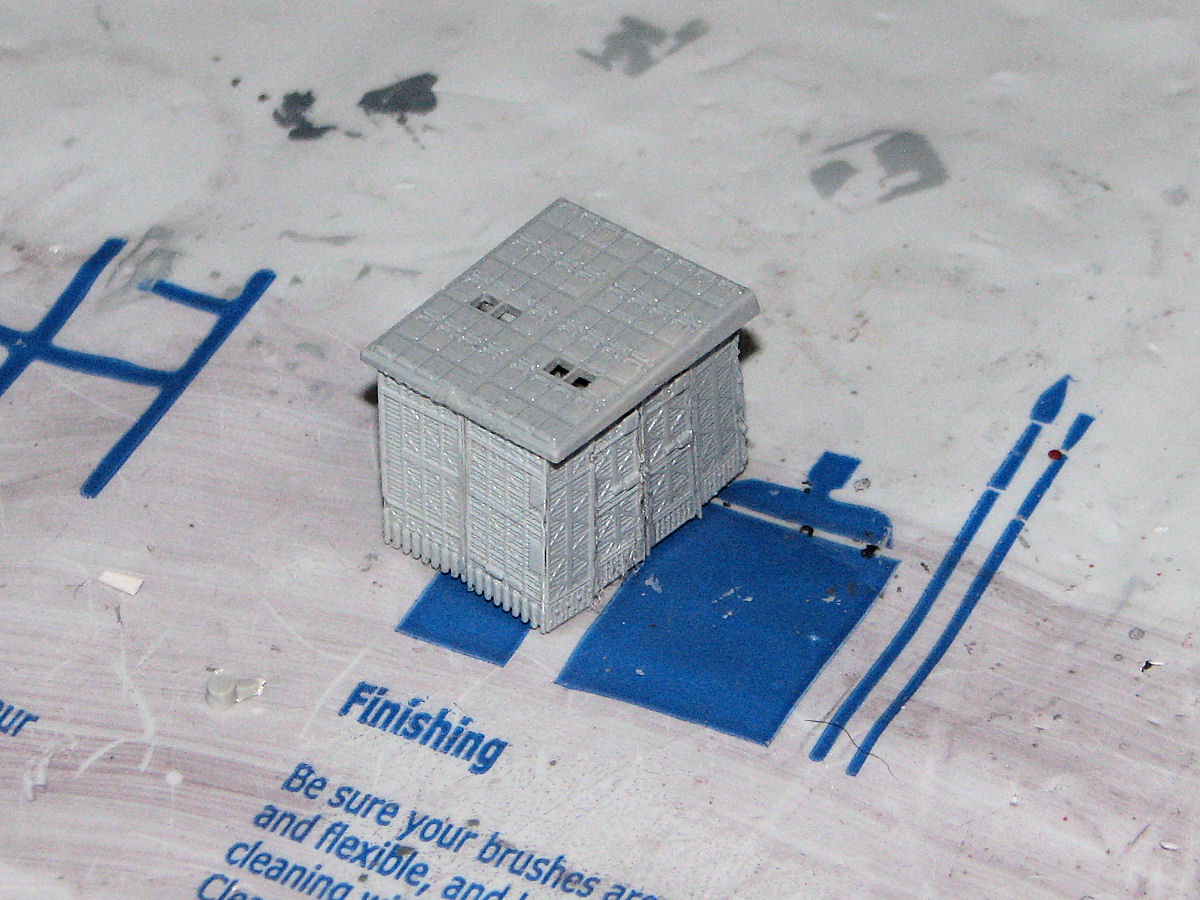
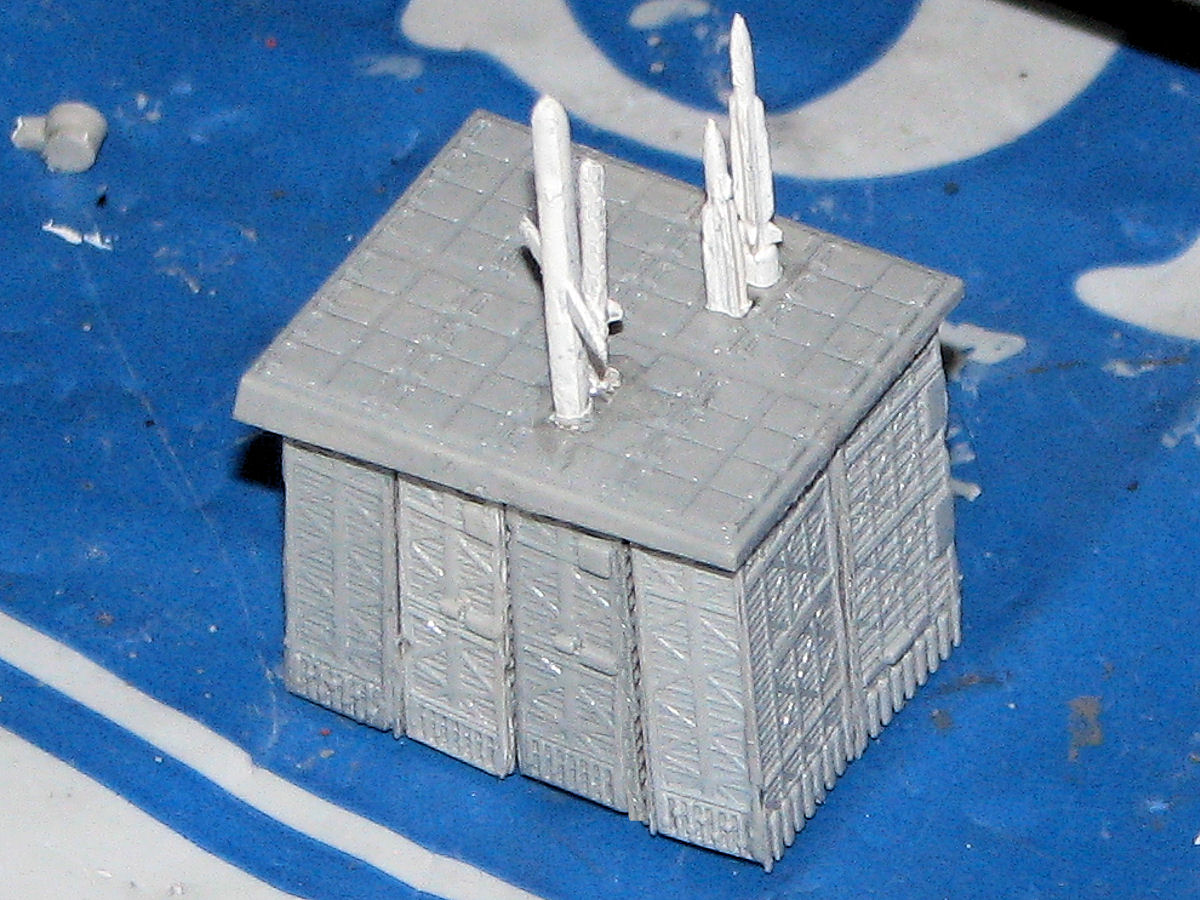

At this point I ended this session. lots and lots of parts and detail added during this session, and except for the helicopter, the basic structure and detail of the ship is complete.
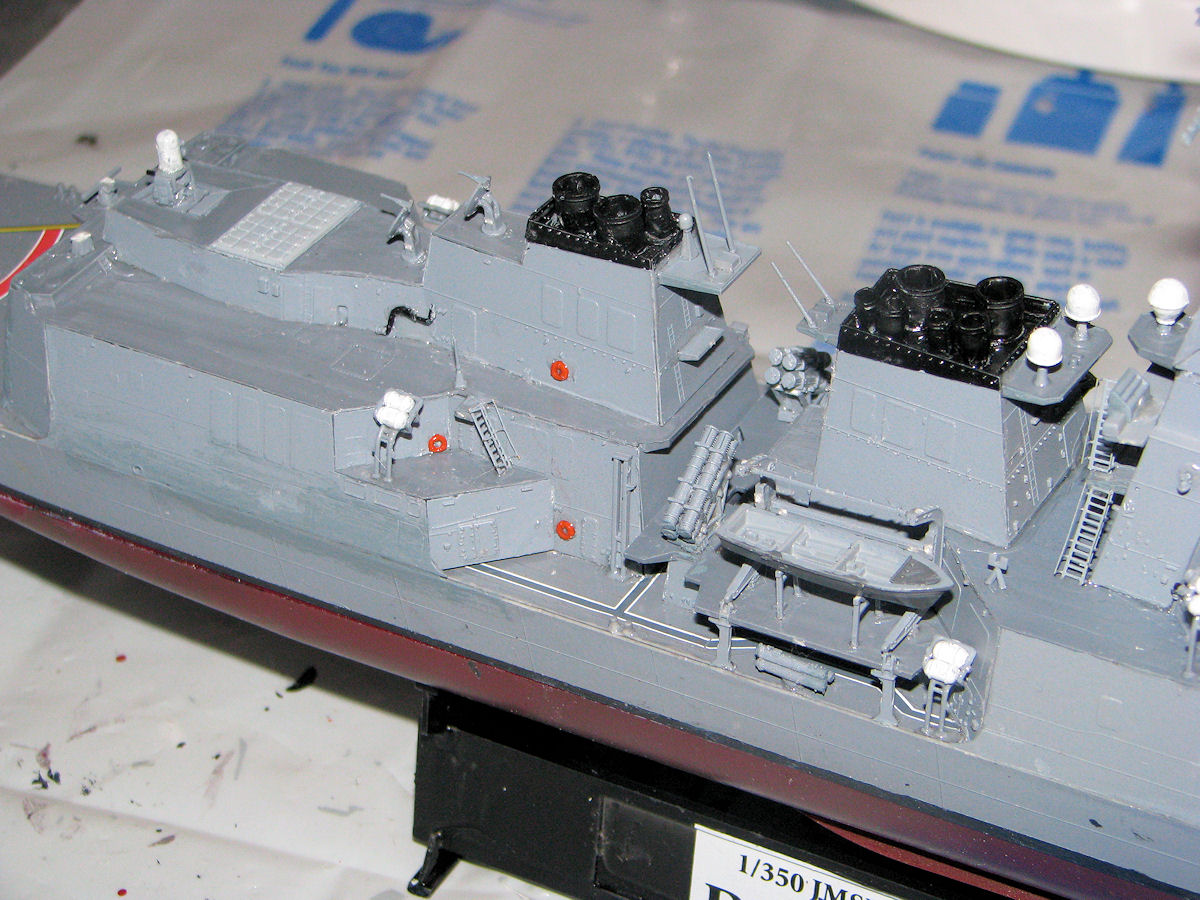
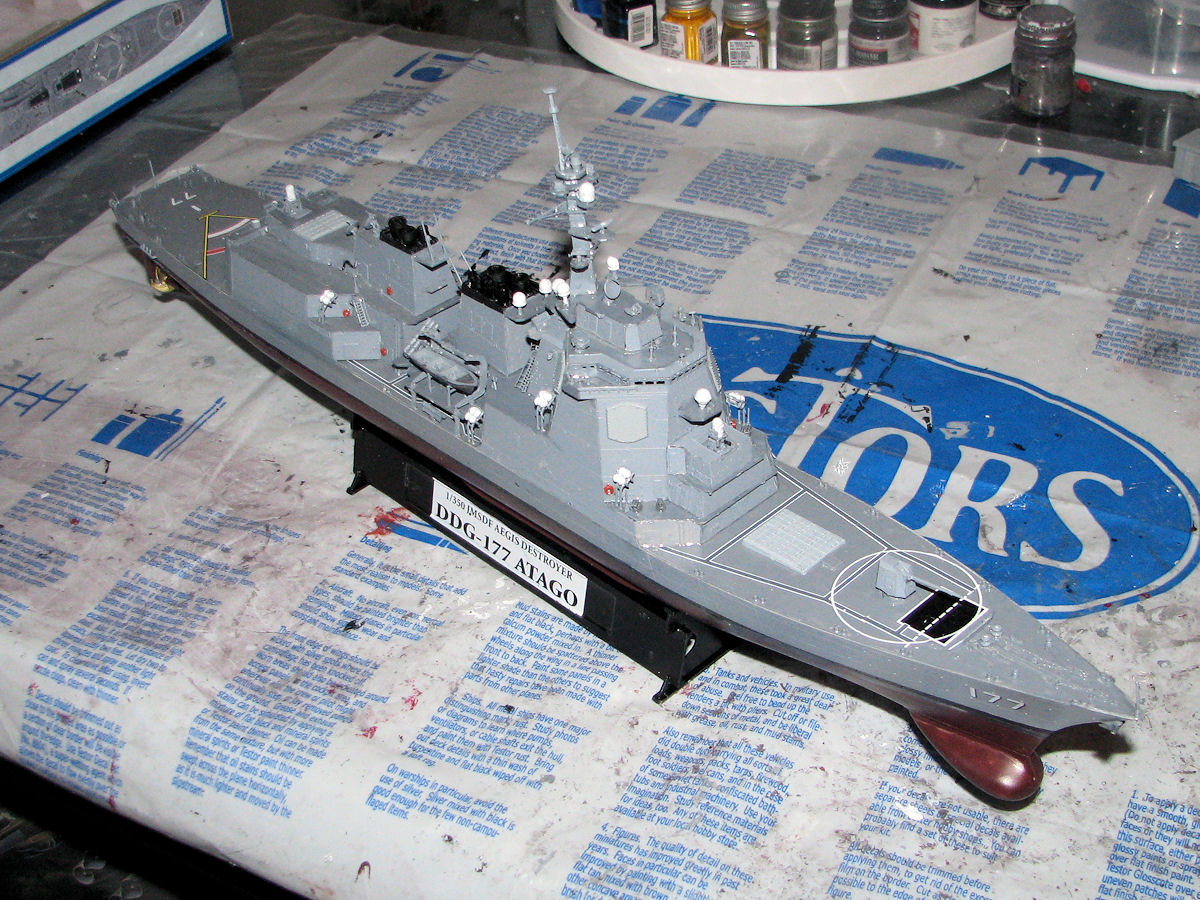
In the next session I will add a Seahawk anti-submarine helicopter and then add all of the photo etch railing necessary to complete the vessel.
I started this session by building and painting, and then adding the decals/markings to the SH-60J ASW Seahhawk that the Atago carries. This helicopter is based on the SH-60B ASW helicopter used by the US Navy, and it is licence built in Japan by Mistuibishi under license from Sikorsky. I then began adding the photo etch railing around the vessel.
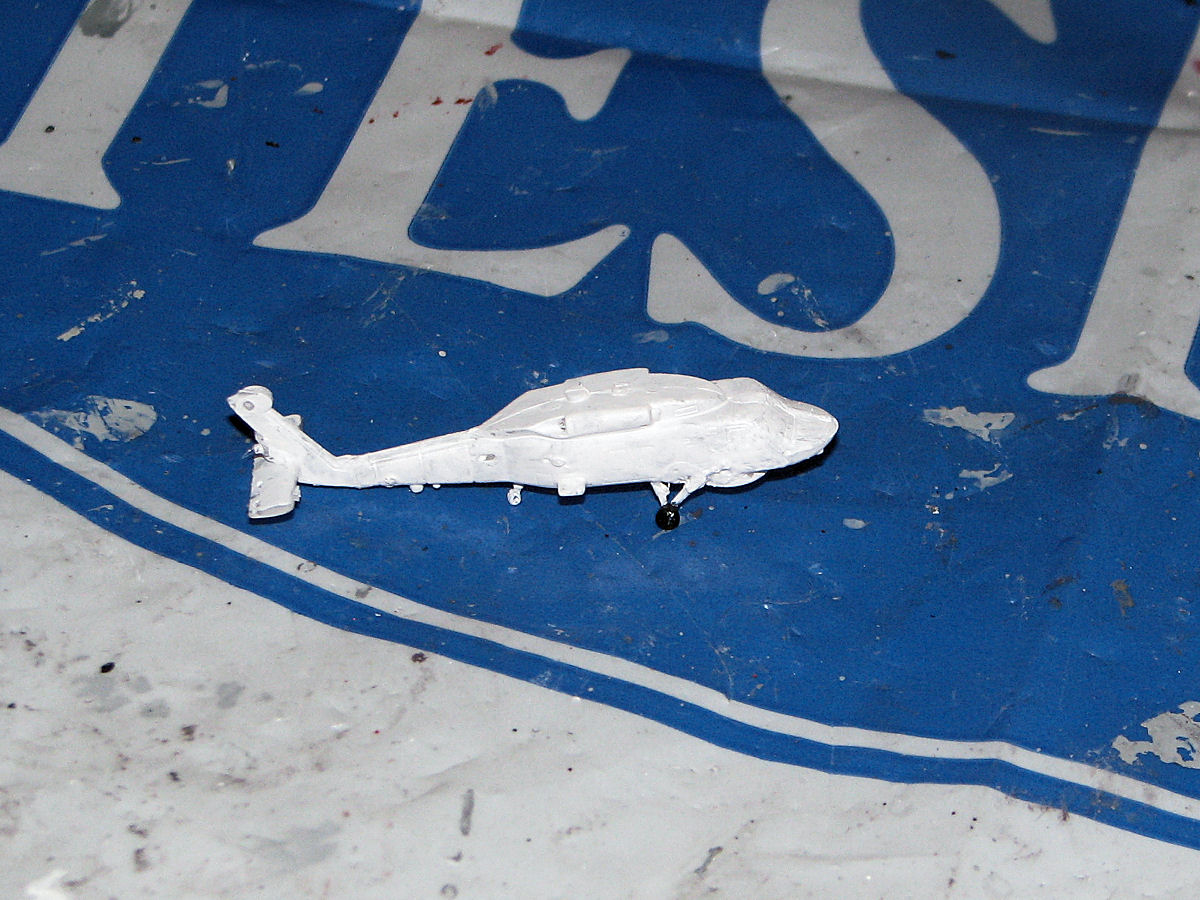
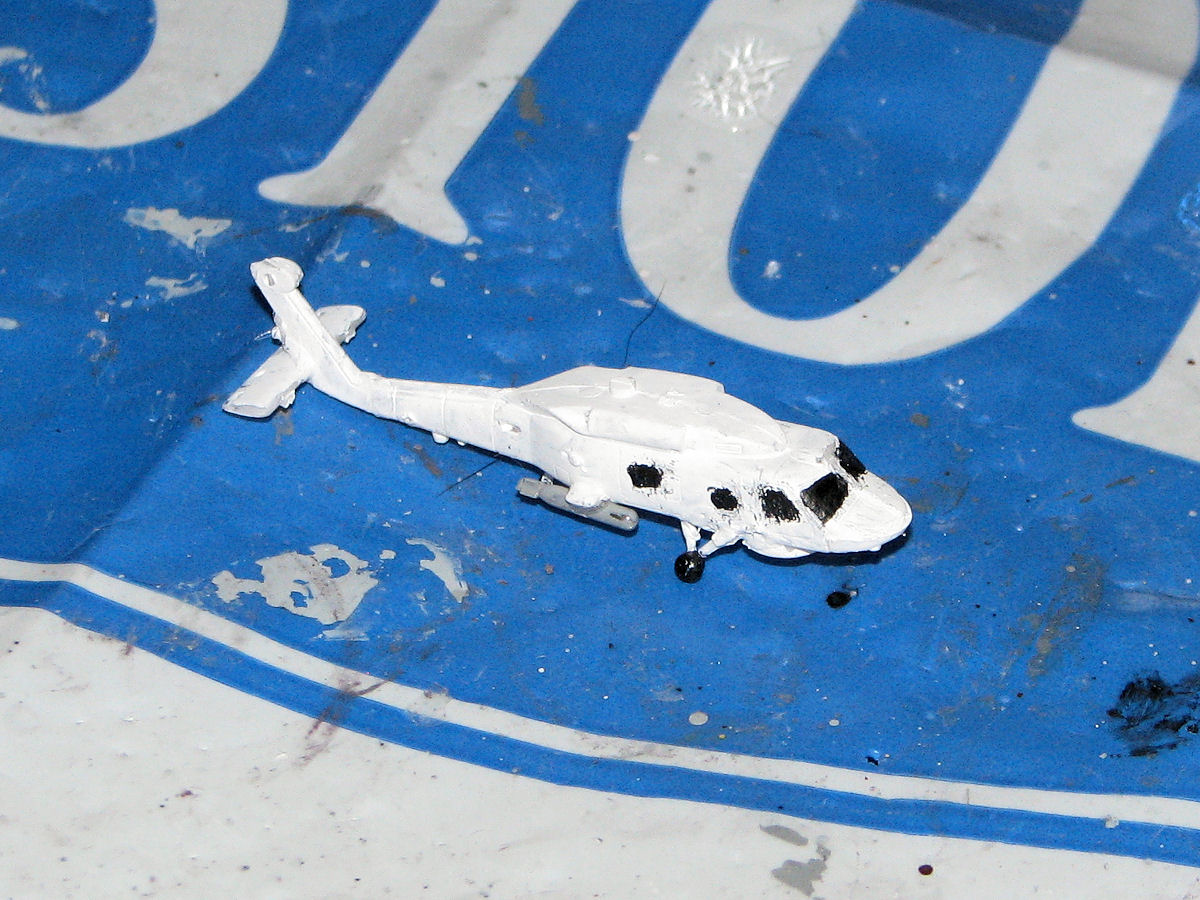
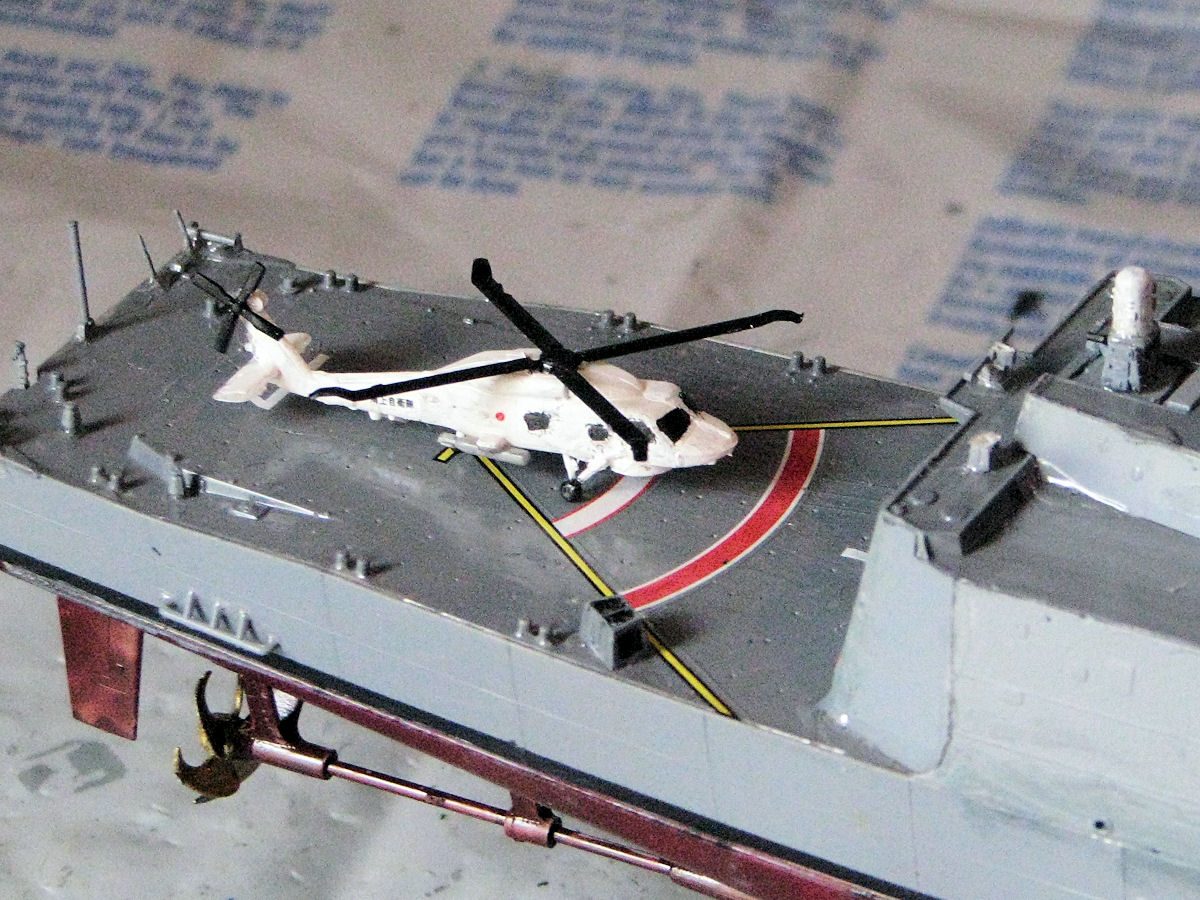


I continued adding the railing (there is quite a bit of it) and also the helicopter safety netting and cooling vents on the funnels and elsewhere on the ship.
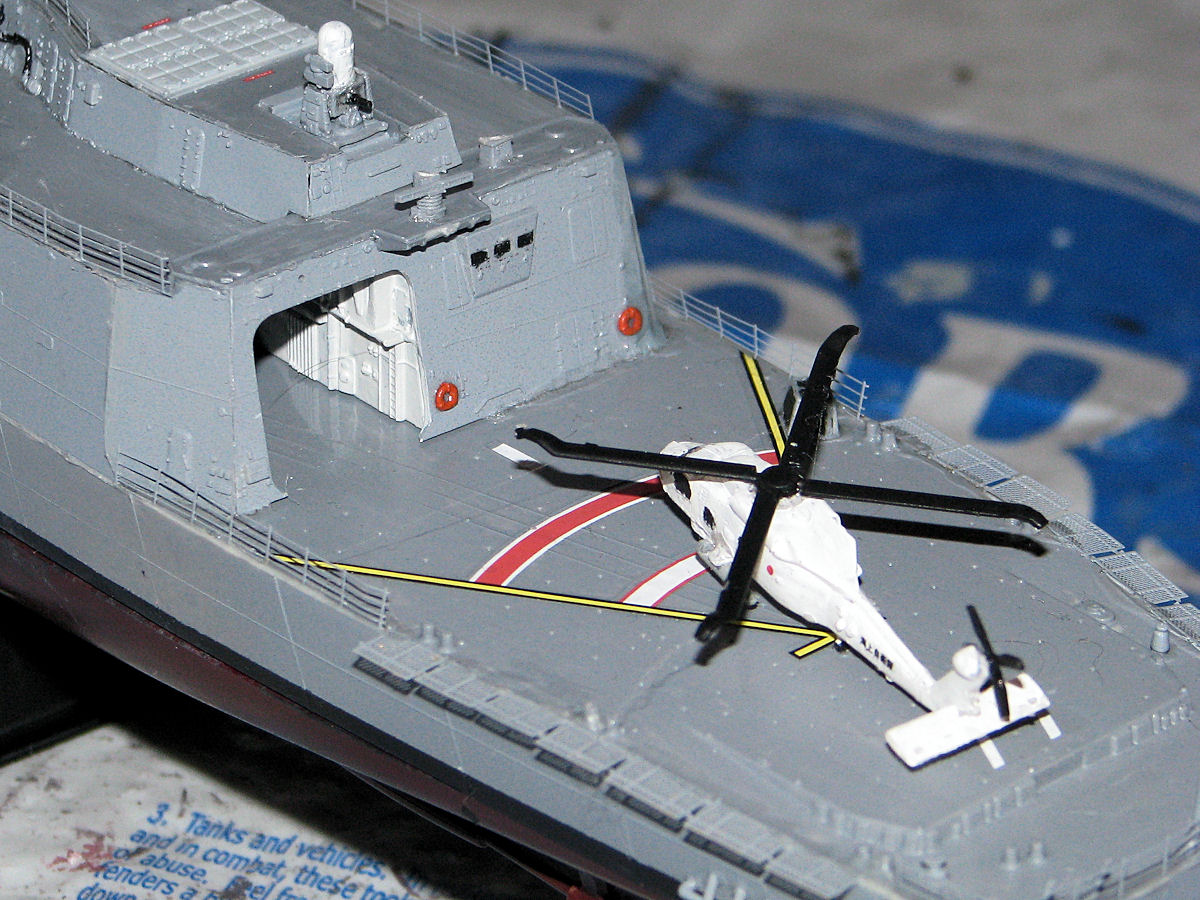
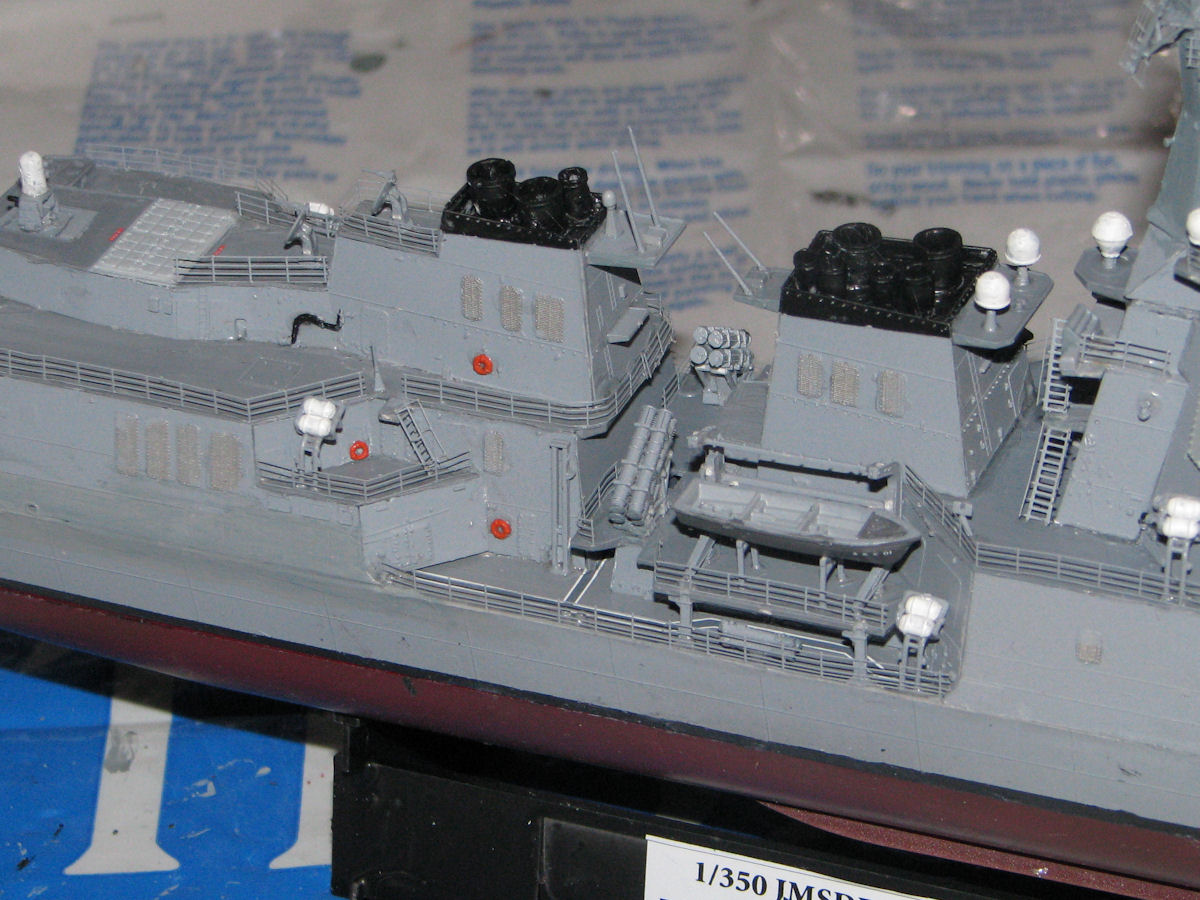
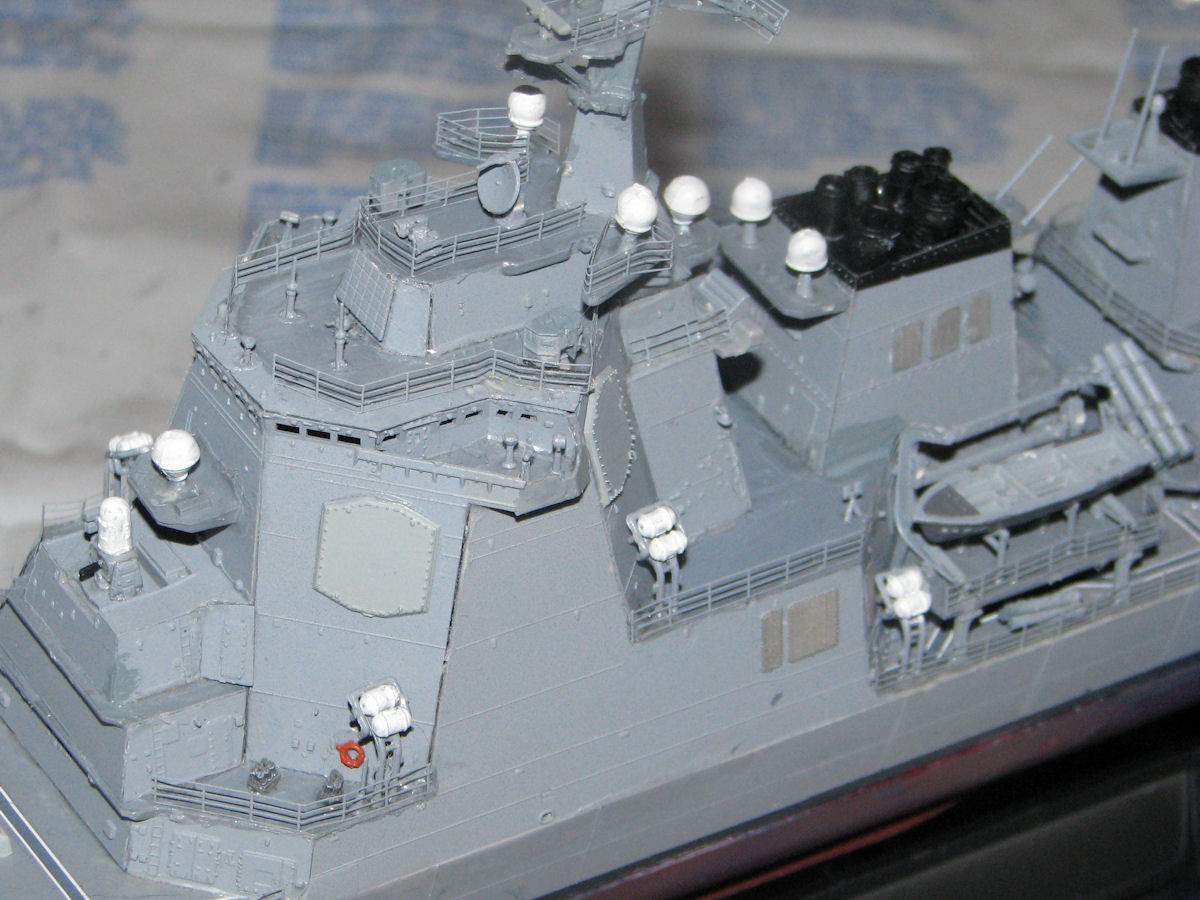

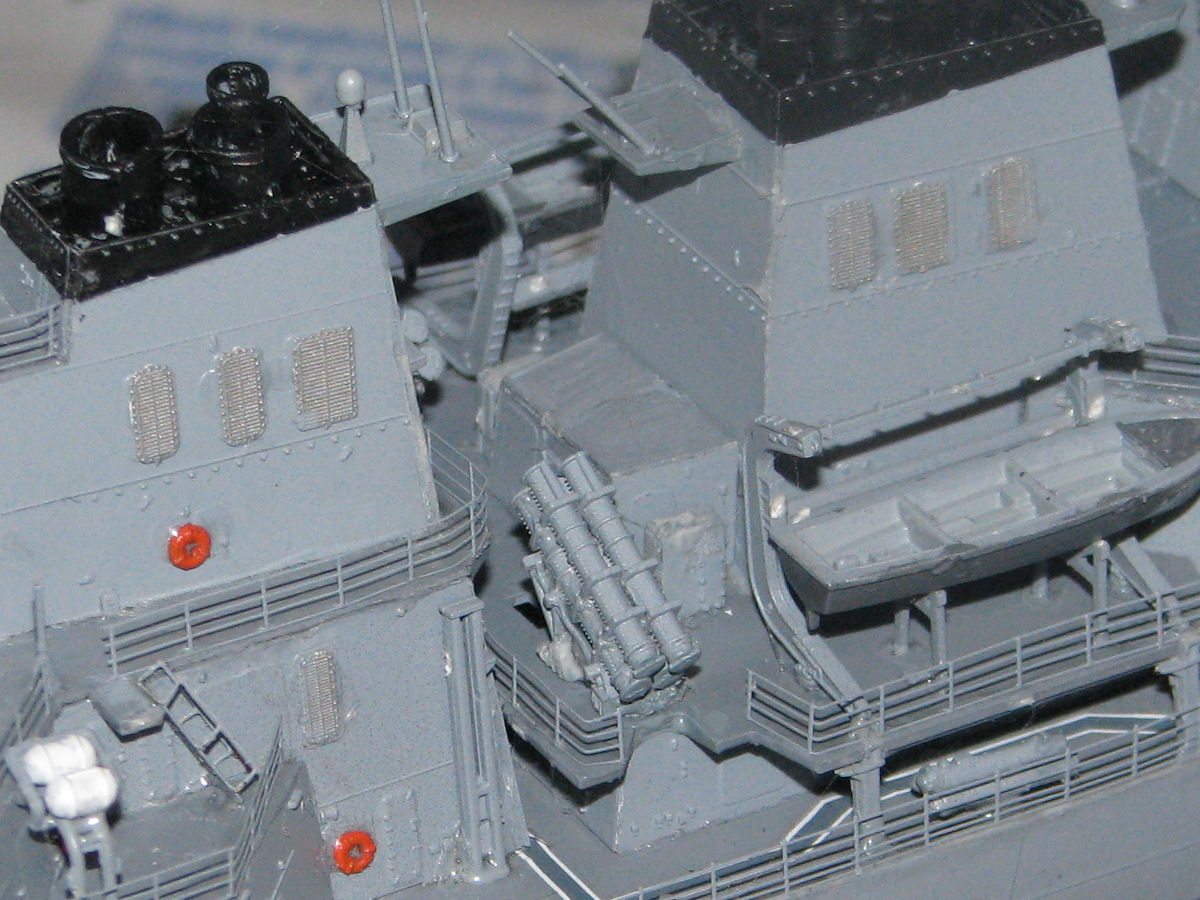
Once this was all done, the model was basically completed. I did a little touch up paint work and then added the two coats of clear flat/dull coat to the model. This evens out the finish because the glue for the photo etch patrts and other places that may be seen has a glossier finish than the paint...this leaves everything with the same finish and really helps make a difference in the overall appearance of the model. Then it was time for the various pictures, from the various angles, of the completed model:
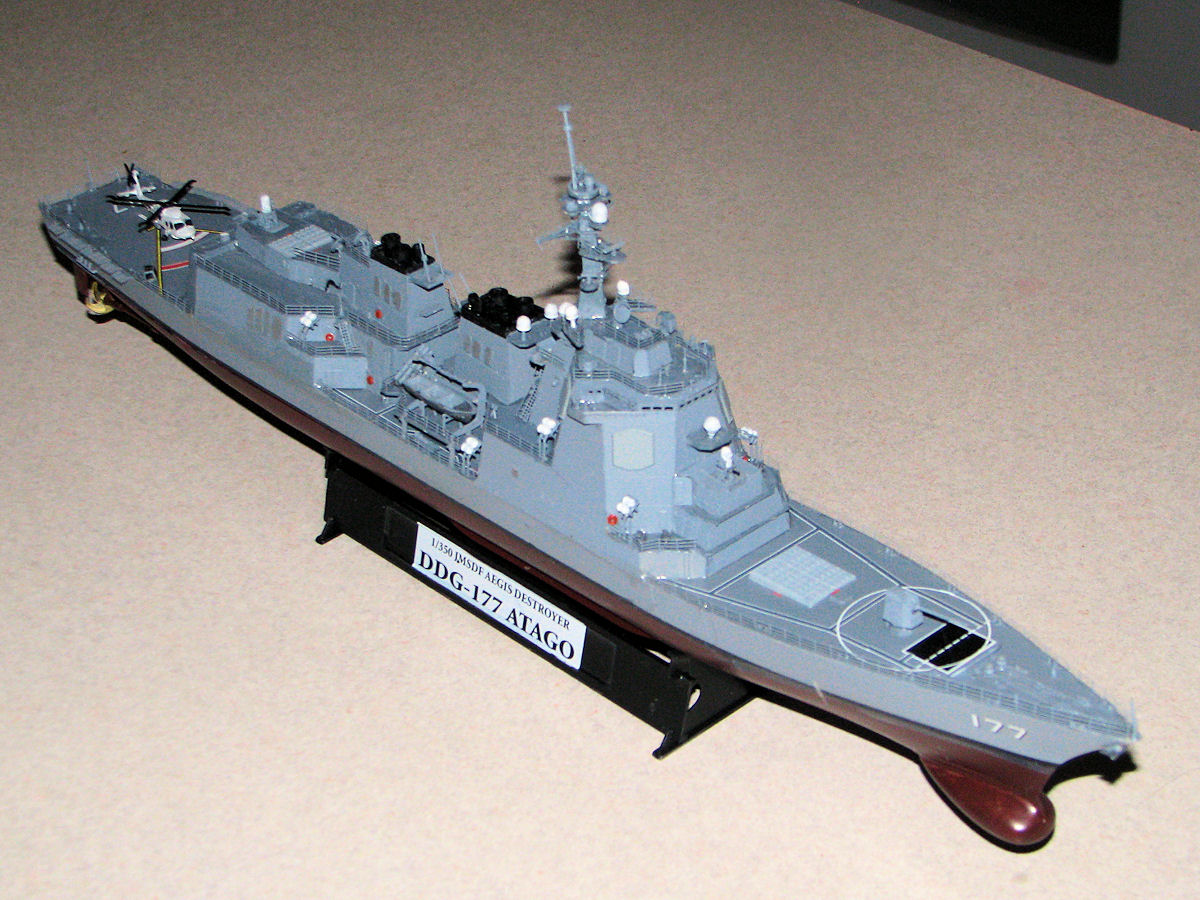

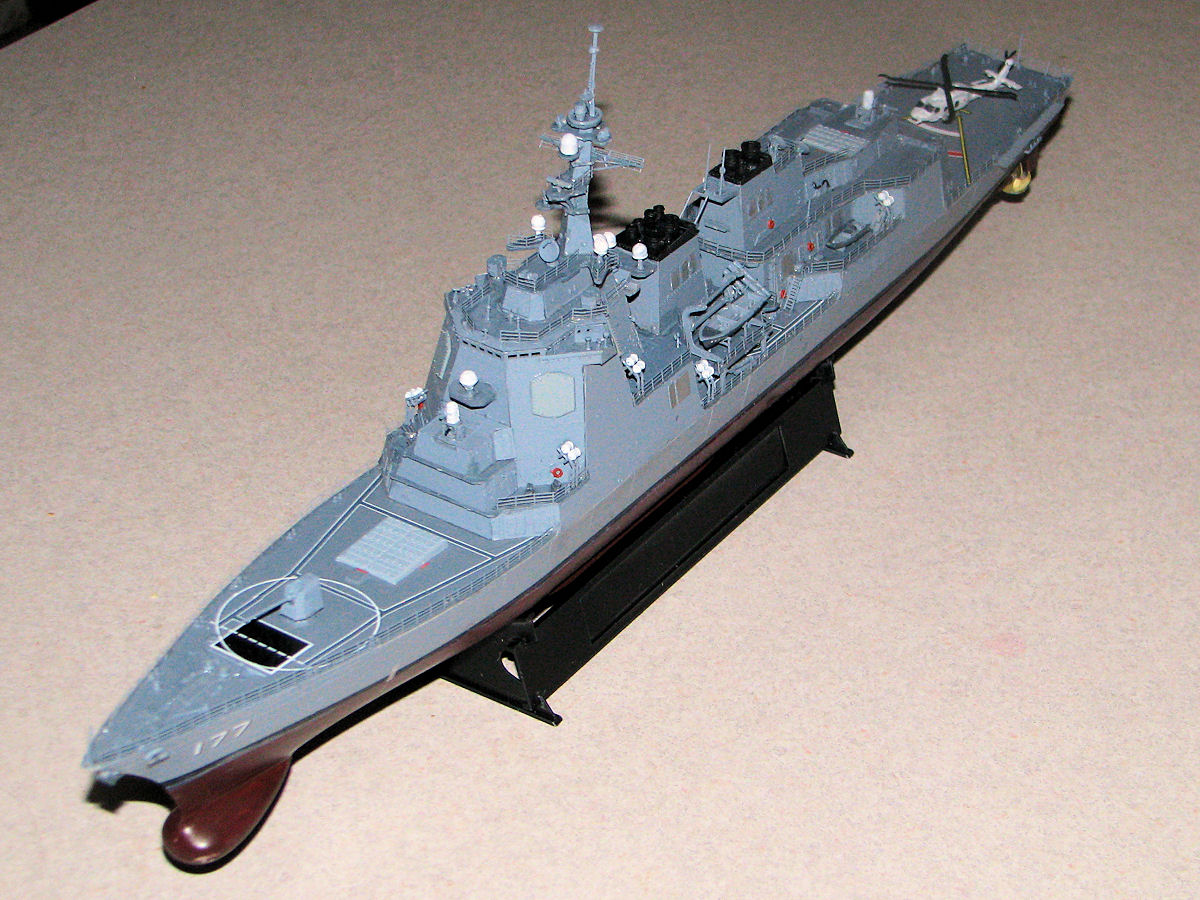

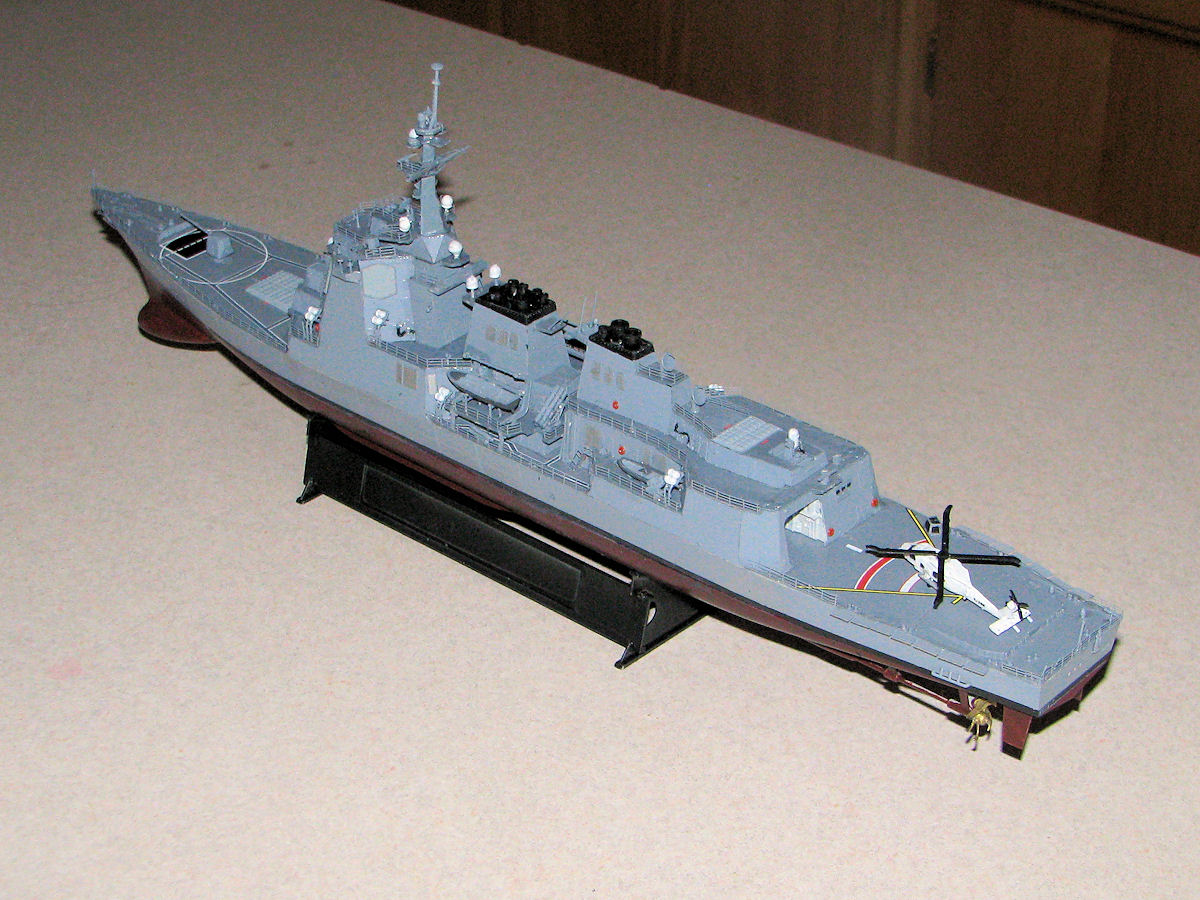
> 
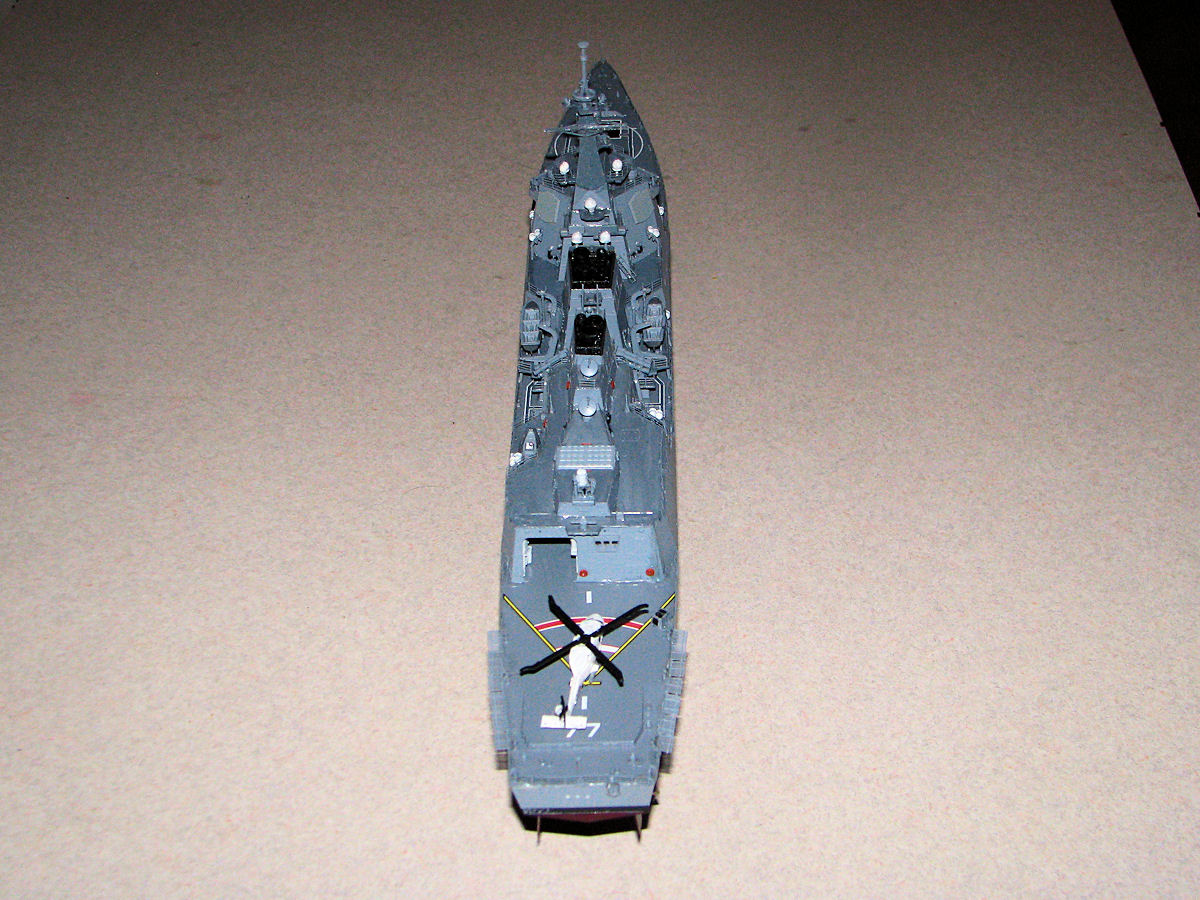
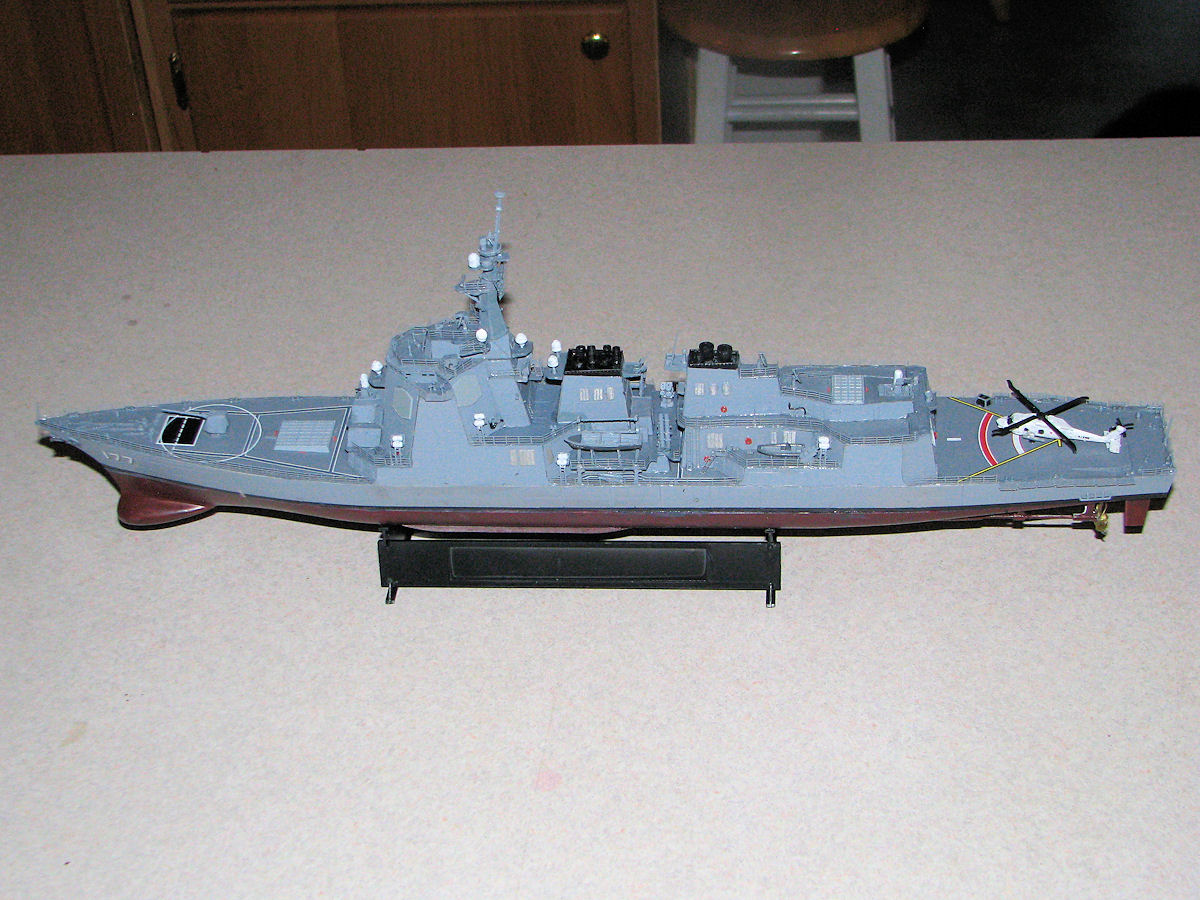


And finally, some cloe-ups showing some of the finished detail.
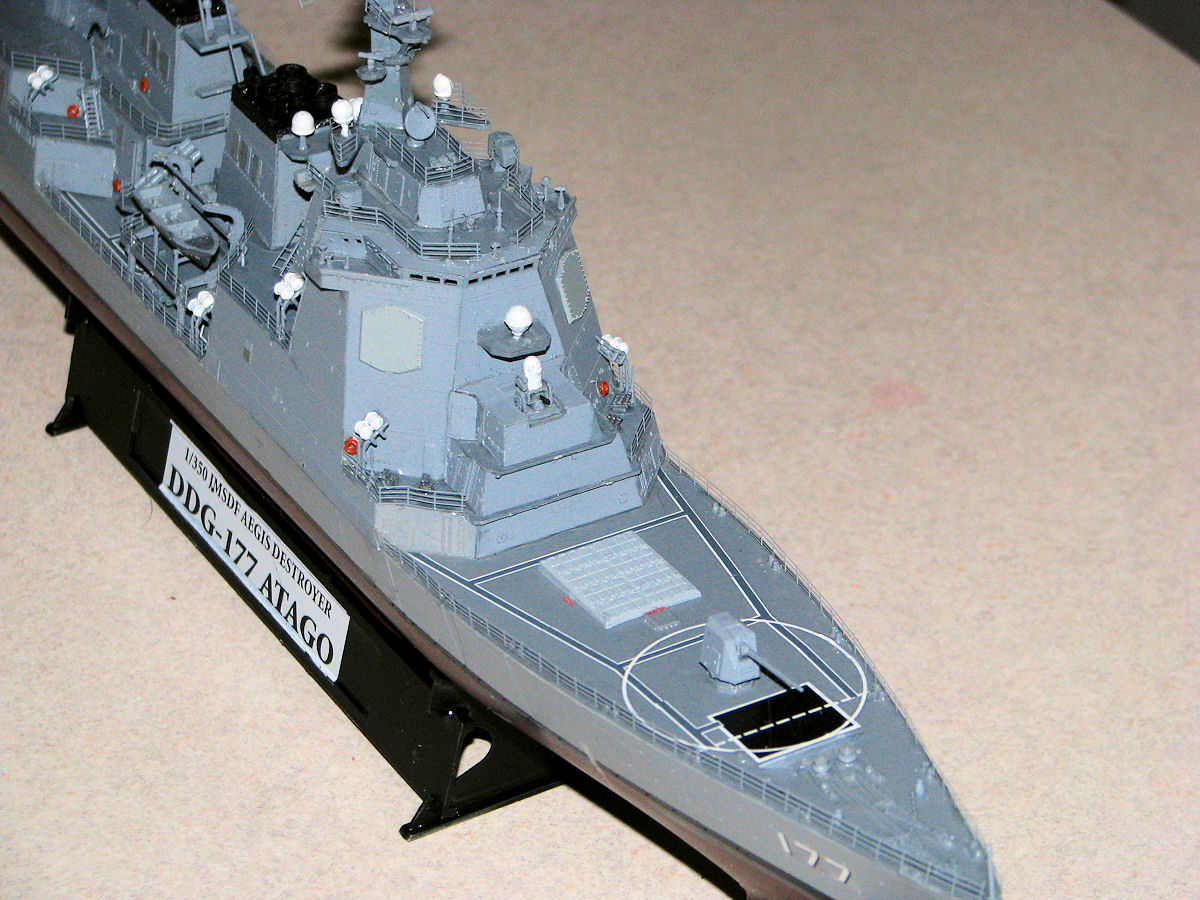

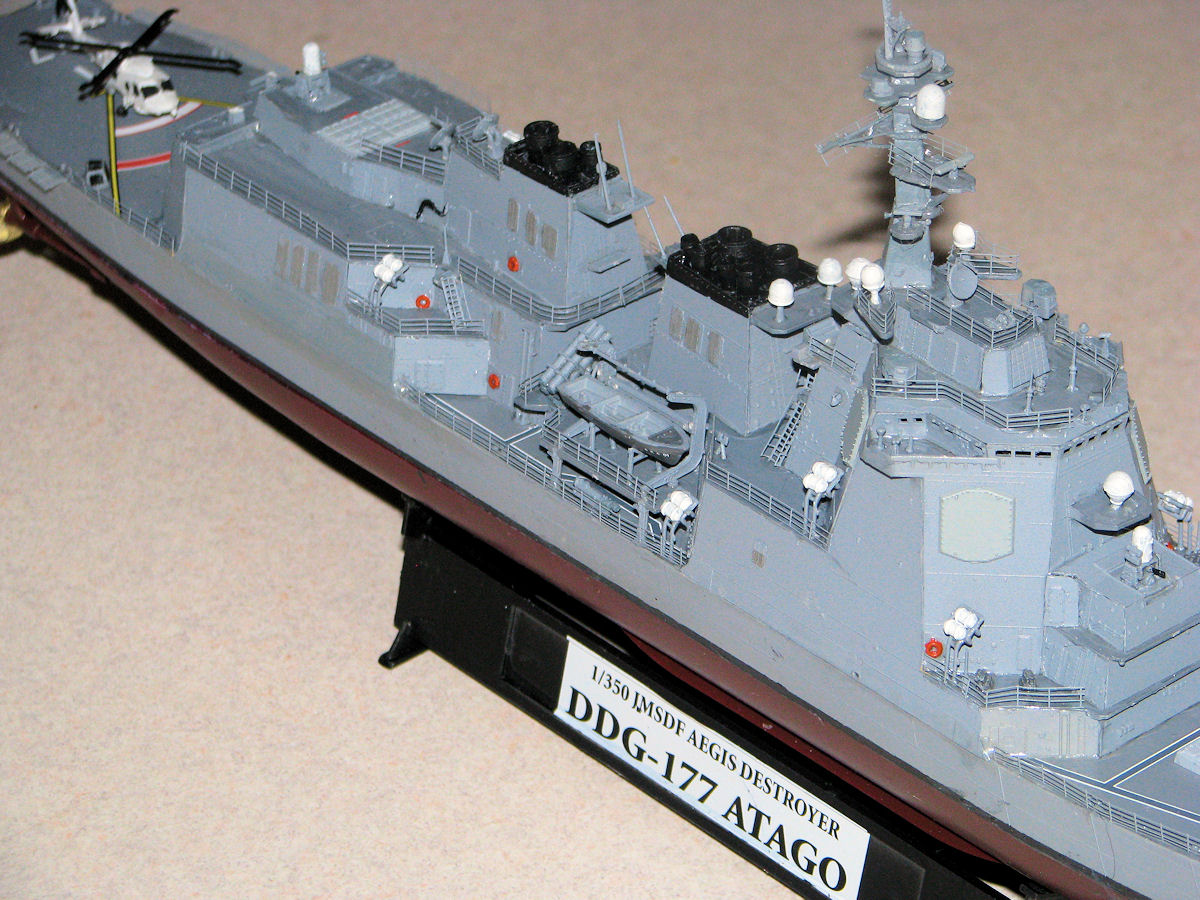
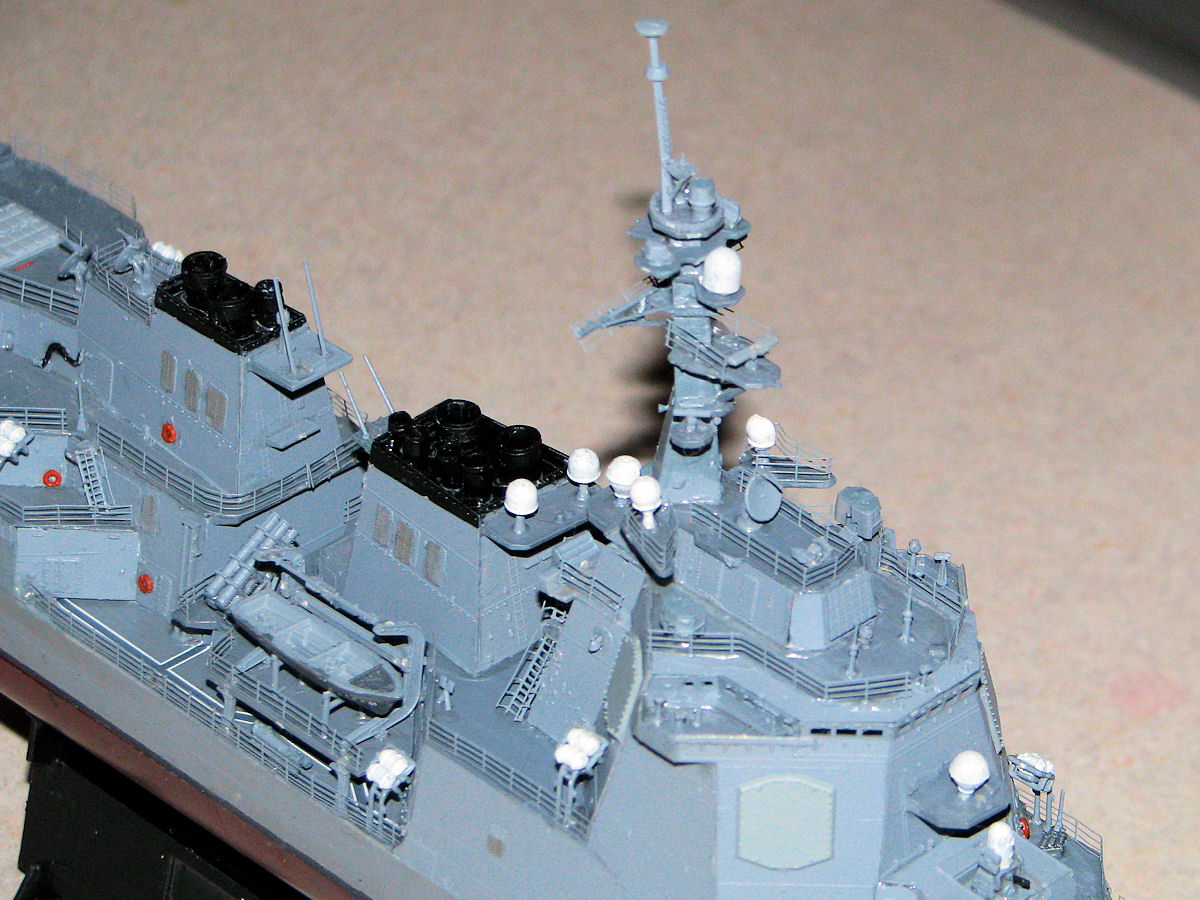
That completes my 1/350 scale JMSDF Atago, DDG-177, AEGIS destroyer from the trumpeter kit. A nice build right out of the box.
The completion of the PLAN Carrier group was centered on the already completed Trumpeter's 1/350 scale PLA Navy's Aircraft Carrier CV-16, Liaoning, (in addition to the other escorts already completed) included Mini Hobby's PLAN Guangzhou, DDG-168. I recently pre-ordered a 1/350 scale model of the PLAN Type 071 LPD, Yuzhao Class, announced by Trumpeter and due out in October, 2013. I will end up adding two of those, probably LPD-998 Yuzhao and LPD-999, Jinggangshan, add the PLAN- DDG-139, Ningbo, and the PLAN DDG-115, Shenyang, along with the PLAN Weifang, FFG-550 and thus build a PLAN ARG. The completion of the US Carrier Strike group was centered on the completed Tamyia's 1/350 scale USS Enterprise, CVN-65, (in addition to the other escorts already completed) included Trumpeter's, USS Freedom, LCS-1, Dragon's USS Preble, DDG-88 and Hobby Boss's USS Texas, SSN-775. When a 1/350 scale USS Enterprise, CVN-80 (or any Gerald R. Ford Class) is released from Trumpeter, Tamiya, Dragon, or whomever else, I will add it to this group along with another AEGIS Cruiser. Whichever Ford Class coms out in 1/350 scale, I will build it as the USS Enterprise, CVN-80. The US ARG will include Tamiya's 1/350 scale, USS Iowa, BB-62 (which I have already completed), Gallery's 1/350 scale USS Iwo Jima LHD-7, Gallery's 1/350 scale USS New York, LPD-21, Cyber Hobby's USS Independence, LCS-2, Bronco Model's 1/350 scale USS Coronado, LCS-4, a Flight IIA US AEGIS class destroyer based on Trumpeter's 1/350 scale USS Lassen, DDG-82, and a Ticonderoga AEGIS cruiser...all of these models which I already own. The completion of the UK Group featured the Airfix 1/350 scale HMS Illustrious, R06 as its center piece until a 1/350 scale Queen Elizabeth carrier is released. When that happens, I will add that carrier to the group as its centerpiece. The Royal Navy CSG will also include two Airfix 1/350 scale Daring Class DDGs (one of which is already completed), two Trumpeter 1/350 scale Type 23 HMS Duke class Frigates (one of which is already completed), and the Hobby Boss 1/350 scale HMS Astute SSN (which is also already completed) and Airfix 1/350 scale HMS Trafalgar SSN. One day, when a 1/350 scale HMS Ocean LPD comes out, I will use it to start building a Royal Navy ARG. The French CSG is centered on Heller's 1/400 scale Charles De Gaulle, R91. I have purchased the 1/400 scale Heller French De Grasse, D612 DDG, which is an ASW DDG, the French Duquesne, D603 DDG which is an anti-air multi-purpose DDG, and the French Aconit D612 FFG and Gueprattet F714 FFGs, both of which are Lafayette class frigates. These five vessels will round out my French CSG. As soon as a French Robin class nuclear sub, like the French Pearle S606 SSN is released in 1/350 or 1/400 scale, I will add that to the group. Also as soon as the Forbin D620, Horizon class anti-air DDG is released in 1/350 or 1/400 scale, I will purchase two of them and replace the De Grasse and Duquesne with them, and then save those two for when a Mistral Class LPD is released in 1/350 or 1/400 scale so I can create a French ARG with those vessels. The completion of the Japanese JMSDF group was centered on Fujimi's very finely detailed, 1/350 scale Hyuga, DDH-181. It will be escorted by Trumpeter's 1/350 scale DDG-177, Atago, an AEGIS class DDG and the JMSDF, DDG-174, Kongo class (which I own), Trumpeterís 1/350 scale DDG-114 Susunami and DDG-111 (both of which are Takinami Class DDGs which I own), and by the 1/350 scale SS-503 Hakuryu (which I own), one of Japans new, very modern and capable AIP Diesel Electric submarines. As soon as a DDG-115 Akizuki in 1/350 scale is released, I will add it to this group. Should a 1/350 scale Osumi Class LPD be released, I will buy two of those vessels and create a JMSDF ARG. Then, finally it will be a complete Russian CSG (centered on Trumpeter's Kuznetsov which I own) the Russian Kirov Class nuclear battle cruiser (CGN), the Peter the Great, by Trumpeter (which I own), the Russian Slava Class cruiser, Varyag by Trumpeter (which I own), two Trumpeter 1/350 scale Udaloy DDGs (which I own), Hobby Boss's Akula II class SSN (which I own), and the new Yasen class Russian SSN (which I own), all in 1/350 scale. Sometime in the more distant future when a 1/350 scale Russian version of the French Mistral class comes out (which is building in real life right now), I will add two of those and build a Russian ARG. Recently I purchased Heller's 1/400 scale Foch, the Clemenceau Class carrier that was sold to the Brazilians in 2000 and in 2002 was refitted and became the Brazilian CV, Sao Paulo, using steam catapults. I will build the model as the Sao Paulo and thus start a Brazilian group, though the Type 22 DDGs and the FFGs the Brazilians use are not available at present. I have however purchased a set of 1/400 scale A-4 Skyhawks and S-3 Trackers to build a suitable air wing for the Sao Paulo. Then, again, once the models are available, I'd like to build an Italian Carrier Strike Group centered on the Cavour and their Horizon DDGs, a Spanish Carrier Strike Group centered on the Juan Carlos and their F-100 AEGIS FFGs, and ultimately an Australian Strike Group centered on the new Canberra Class LPD and the Hobart class AEGIS DDGs. If they ever build the models, an Indian Carrier Strike Group centered on either the Vikramaditya or their new ADS Carrier, the Vikrant, and their Kolkata class DDGs and Shivlak class FFGs would also be nice. Years more worth of work! You can see all of these actual carriers, read their histories and specifications at my site:
|
FINE ALL-AMERICAN, LIBERTY ORIENTED BOOKS AUTHORED BY JEFF HEAD
BACK TO JEFFHEAD.COM
Copyright © 2012 by Jeff Head, All Rights Reserved

